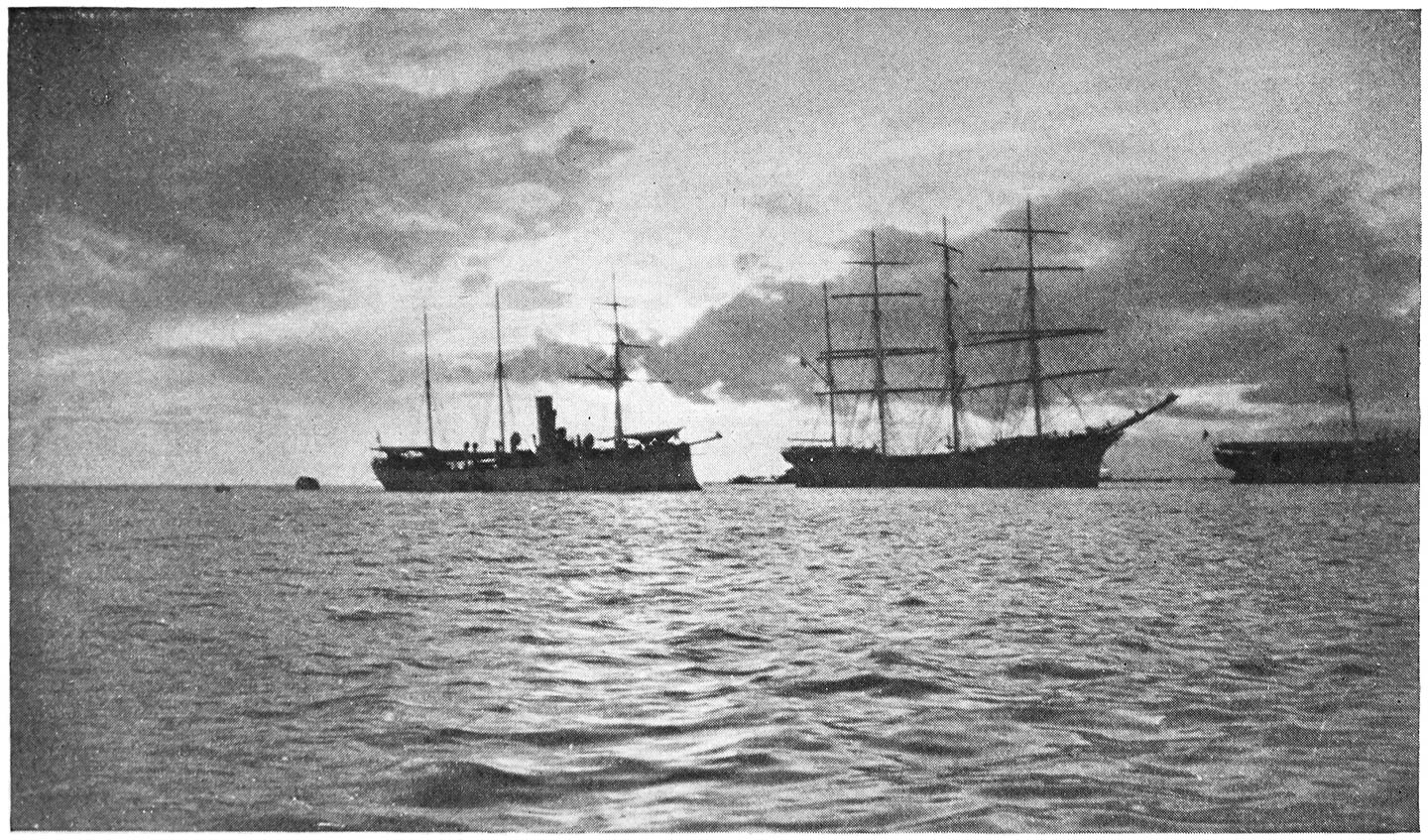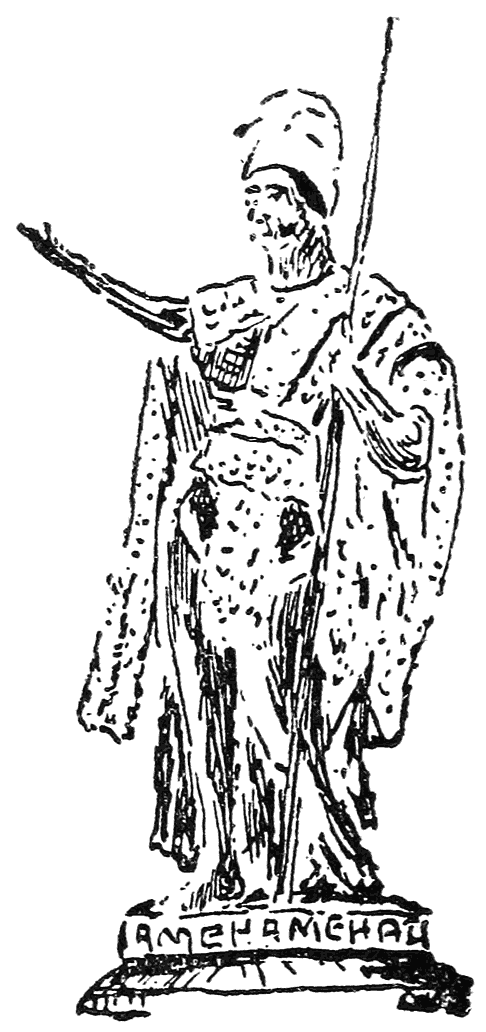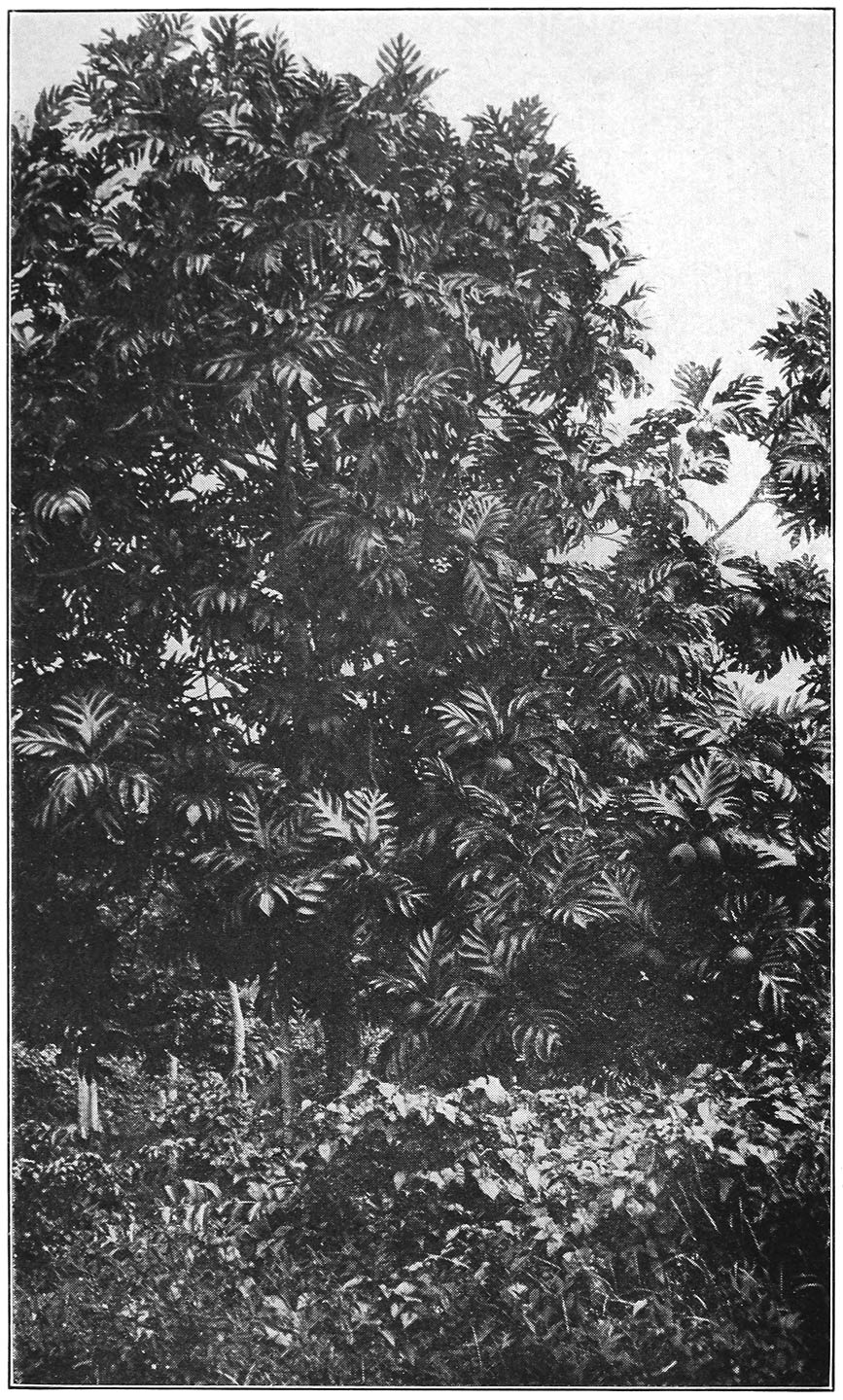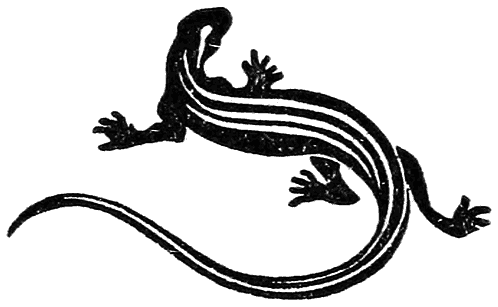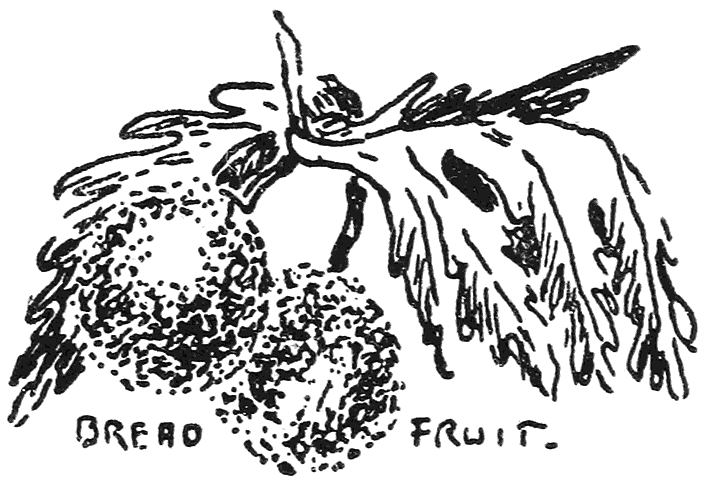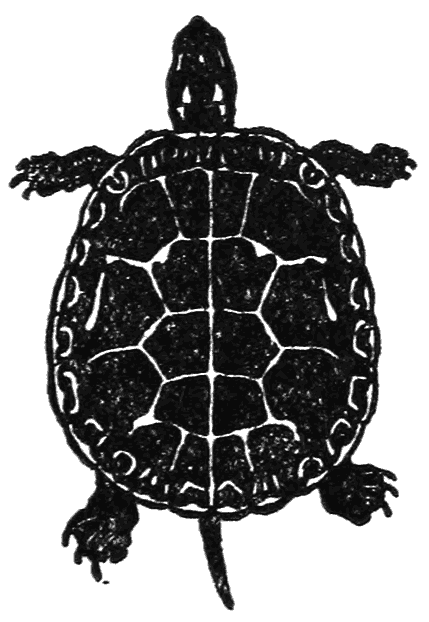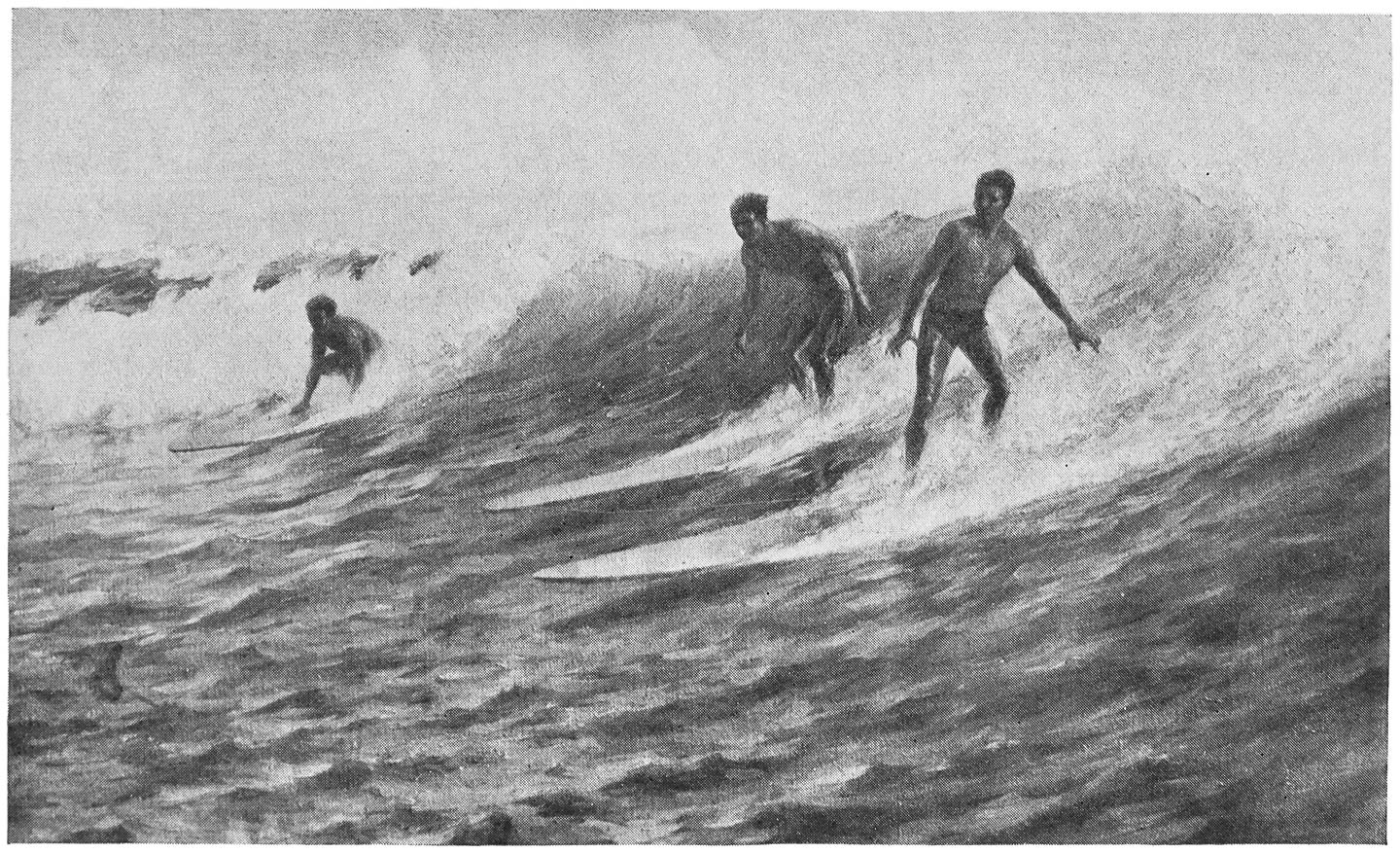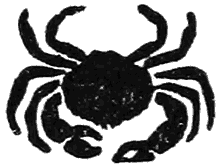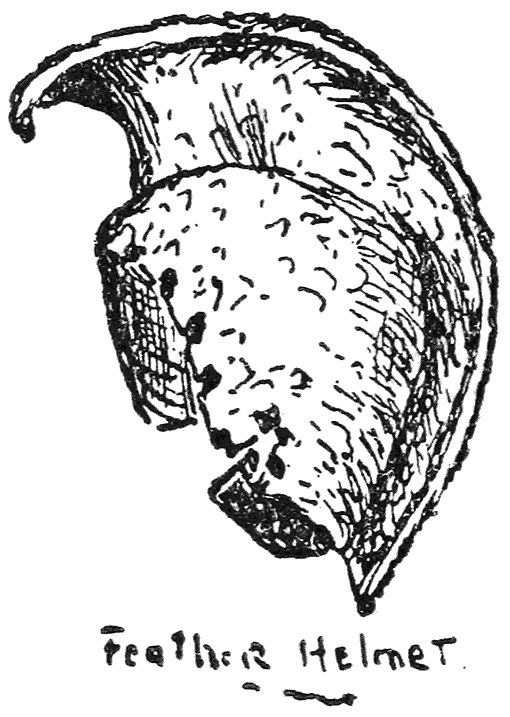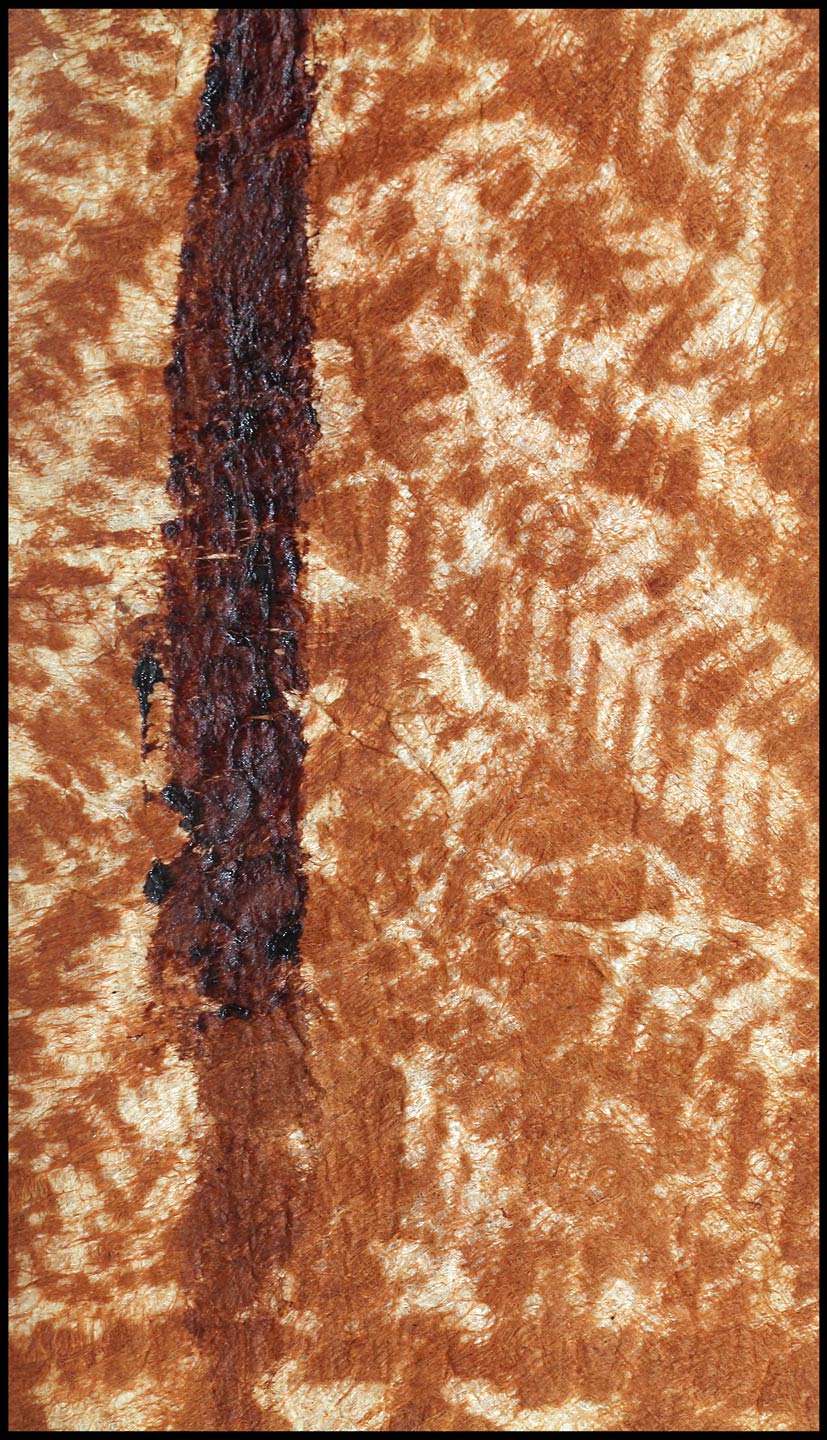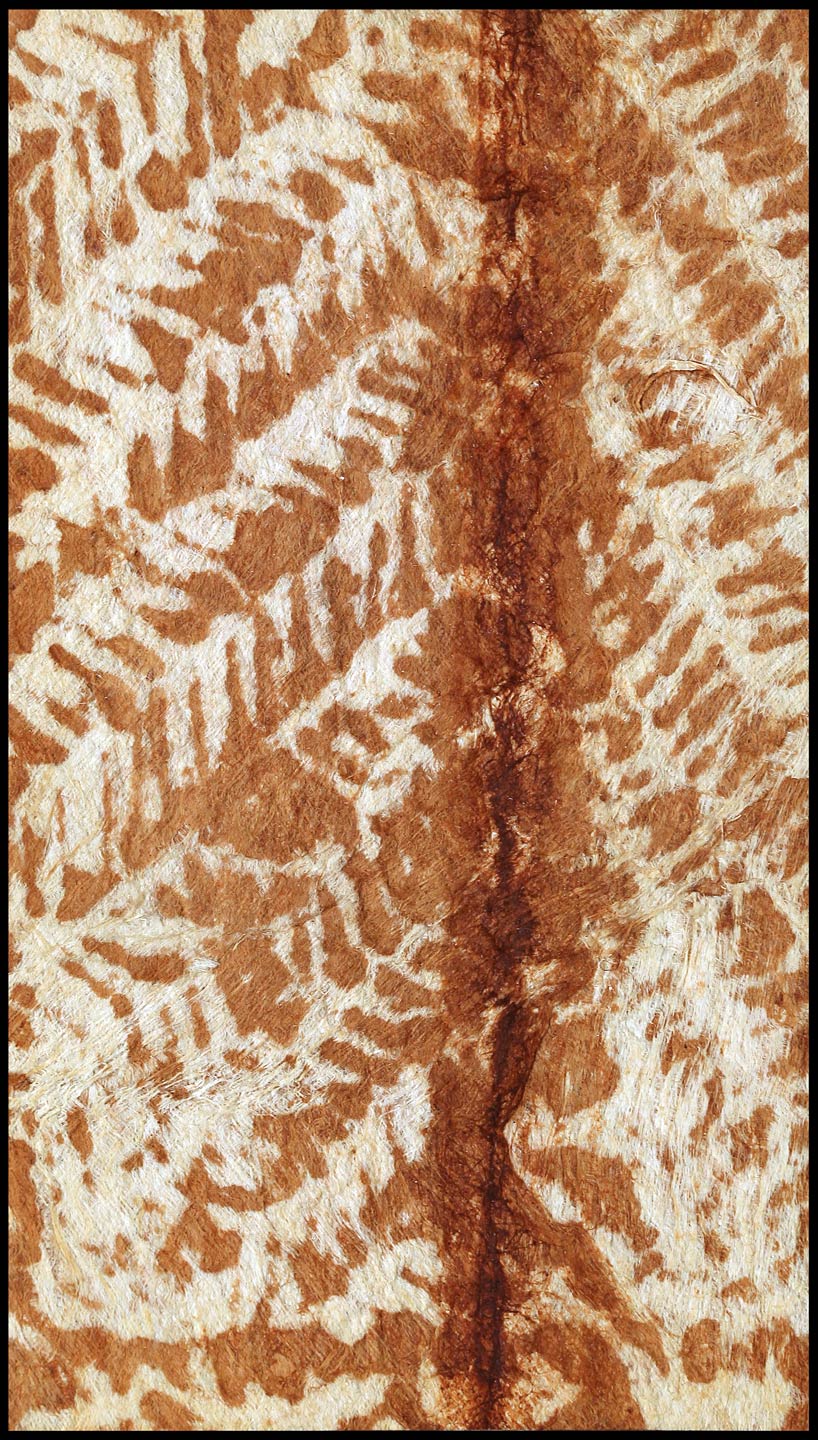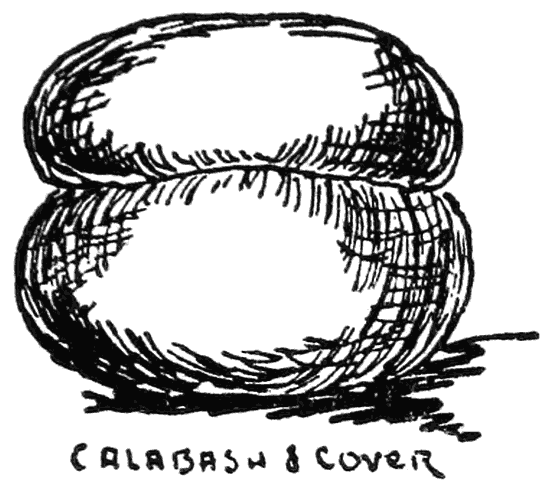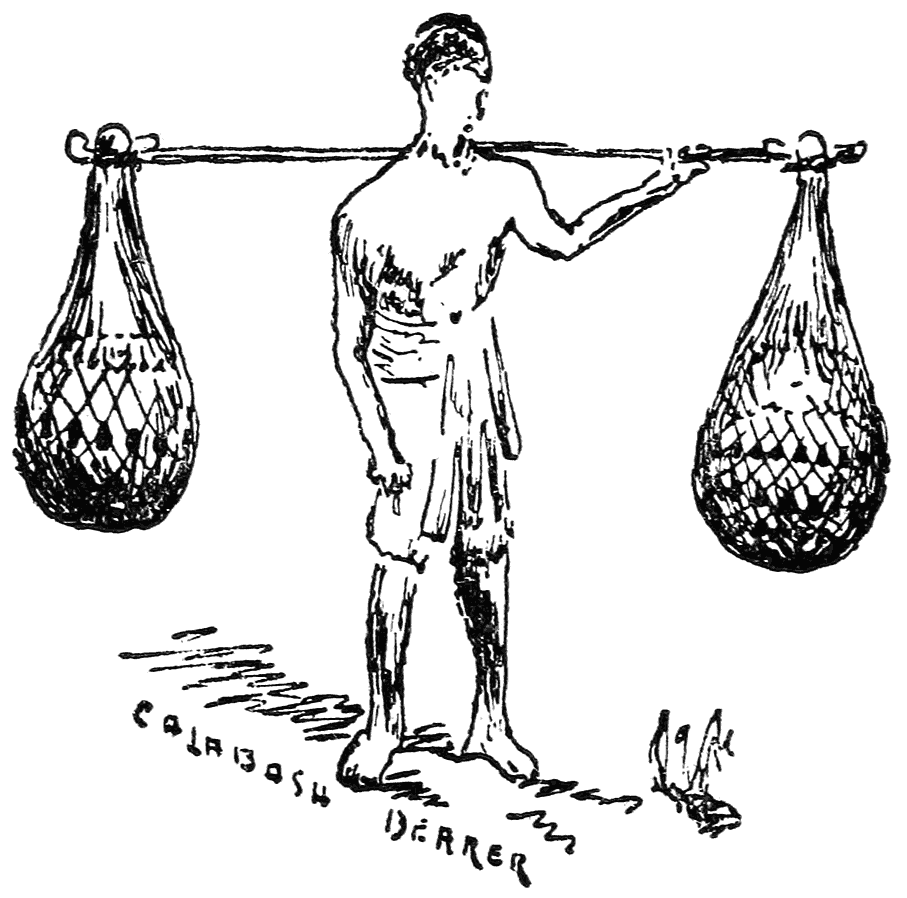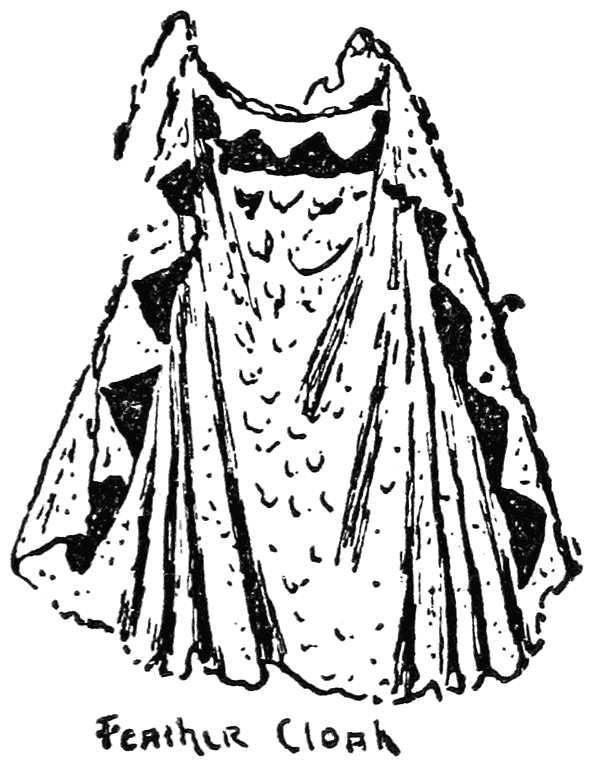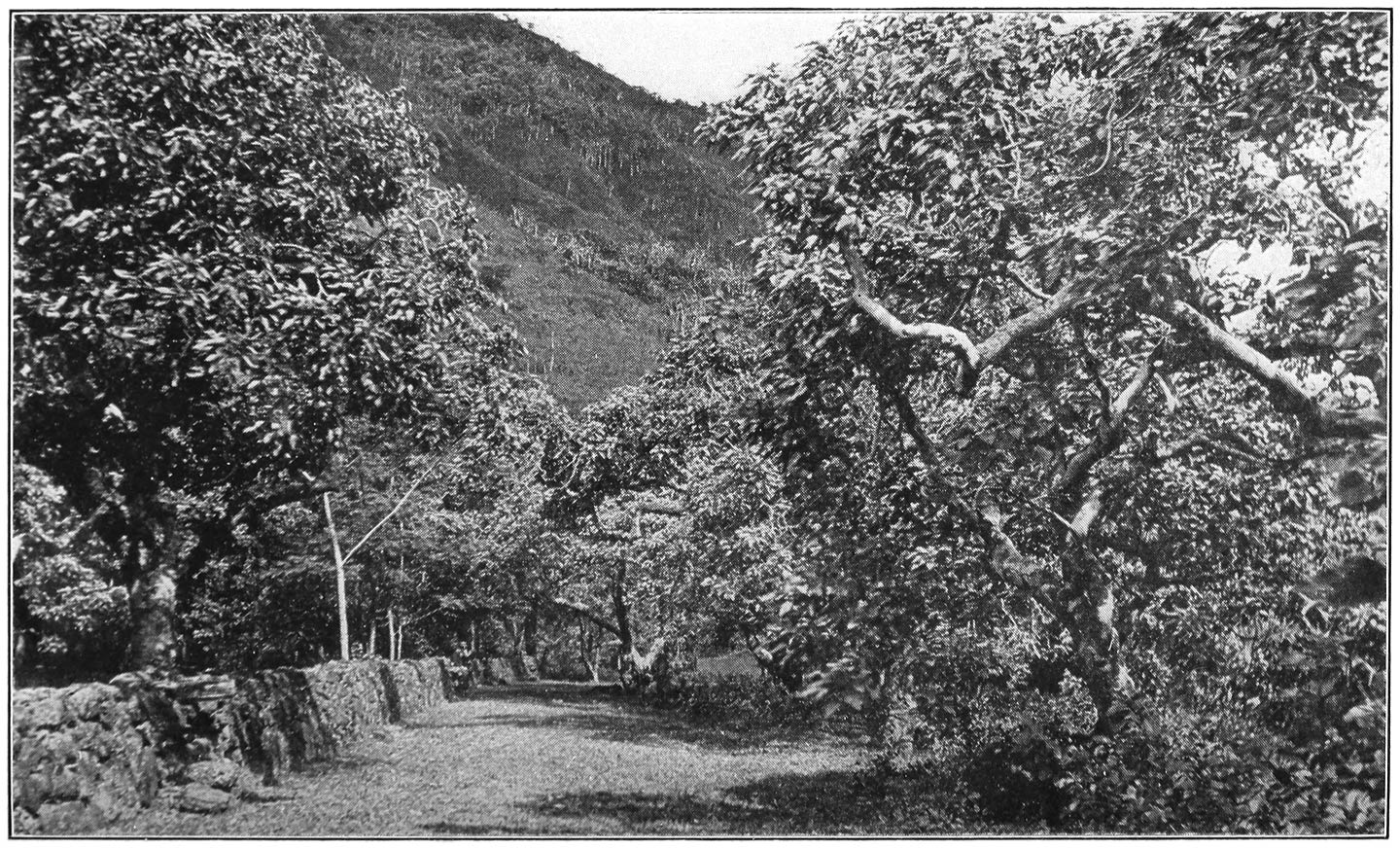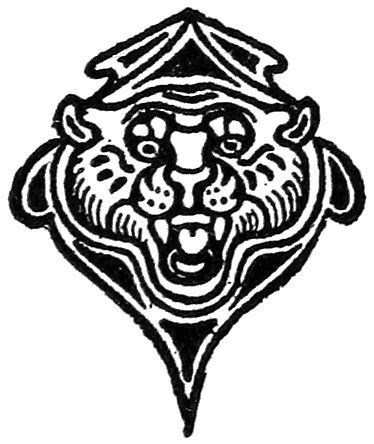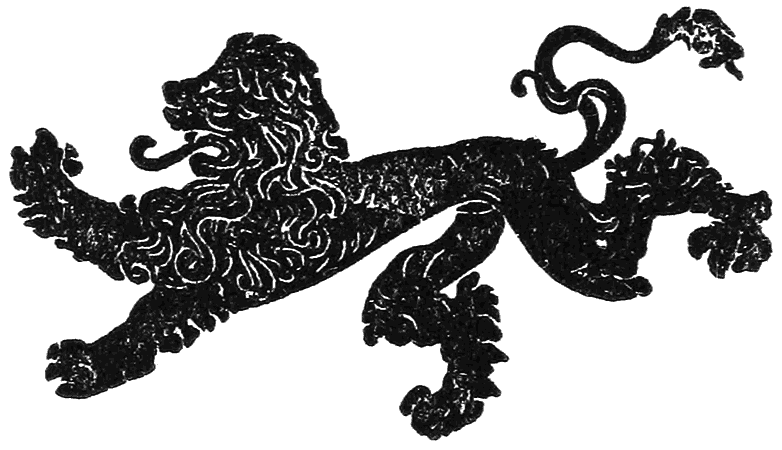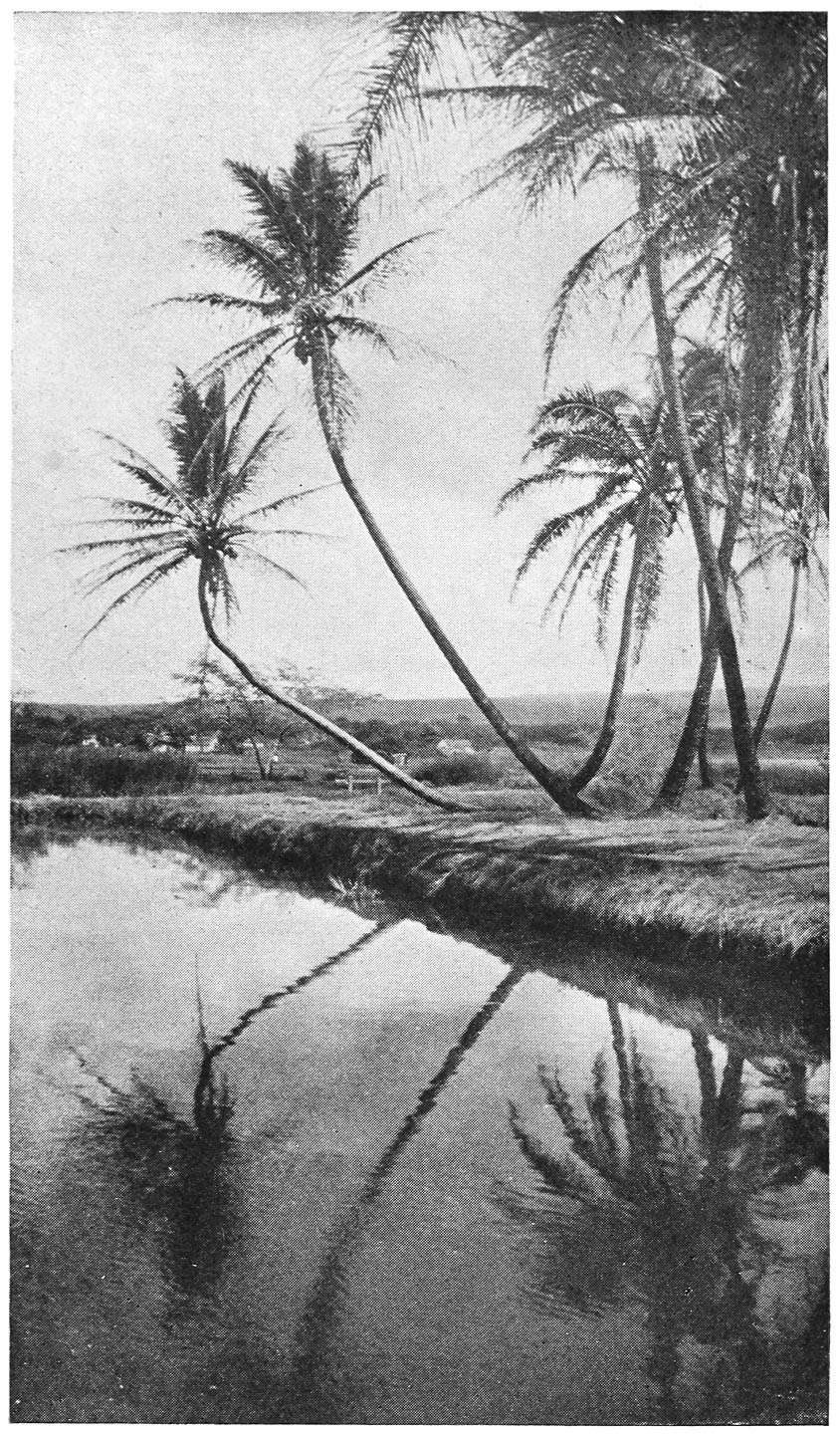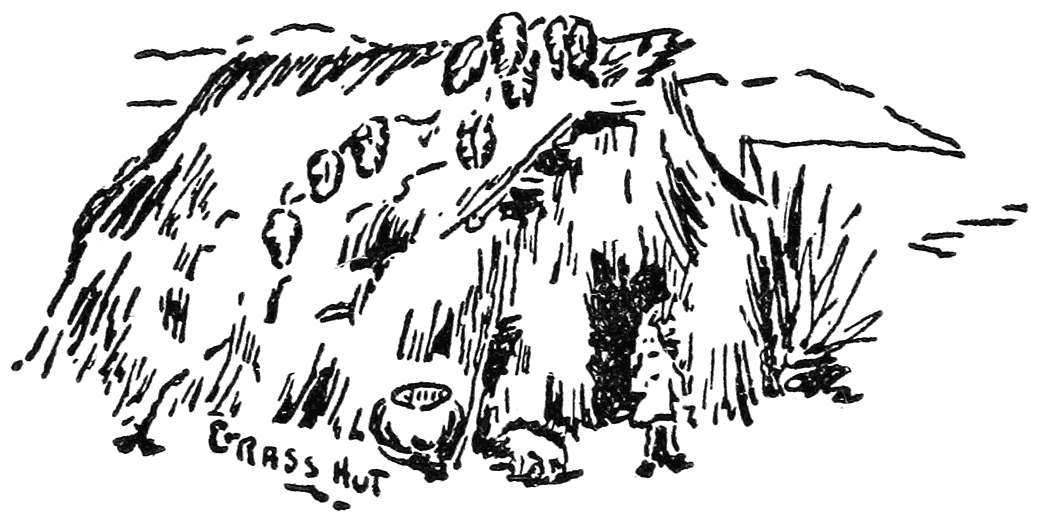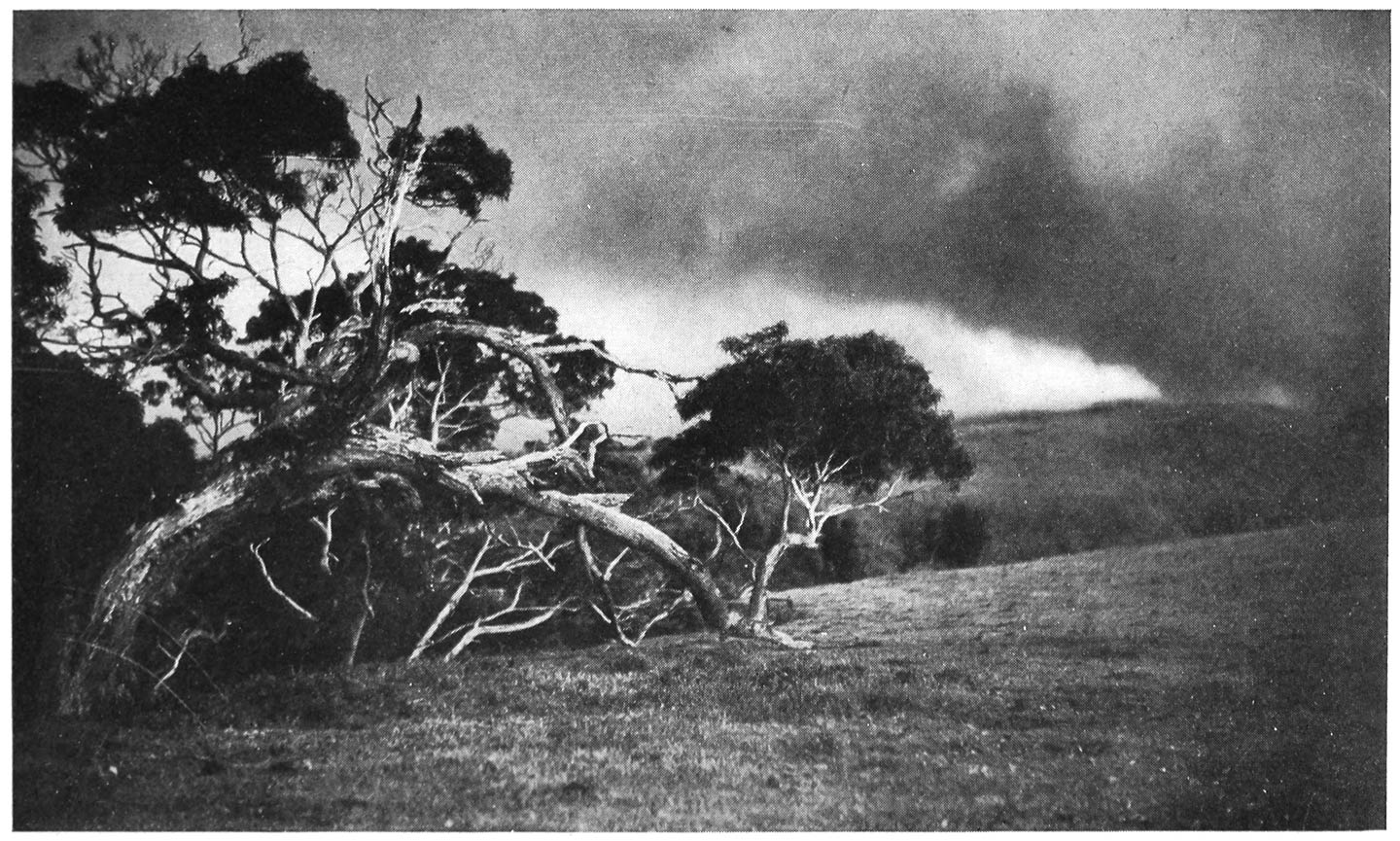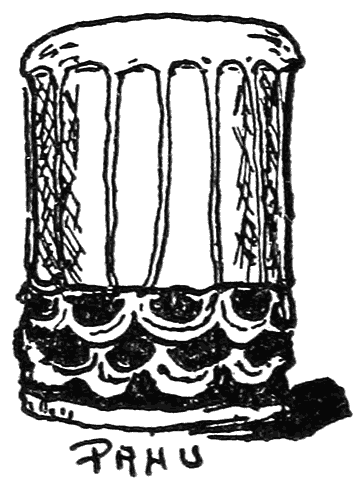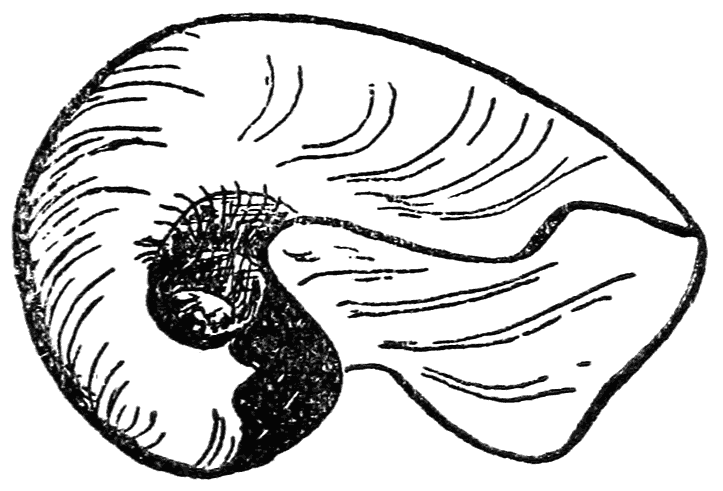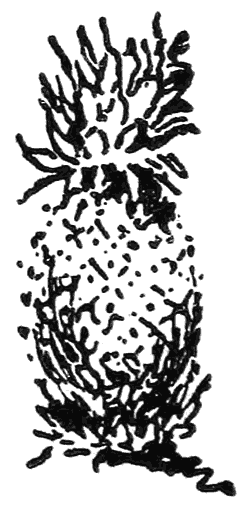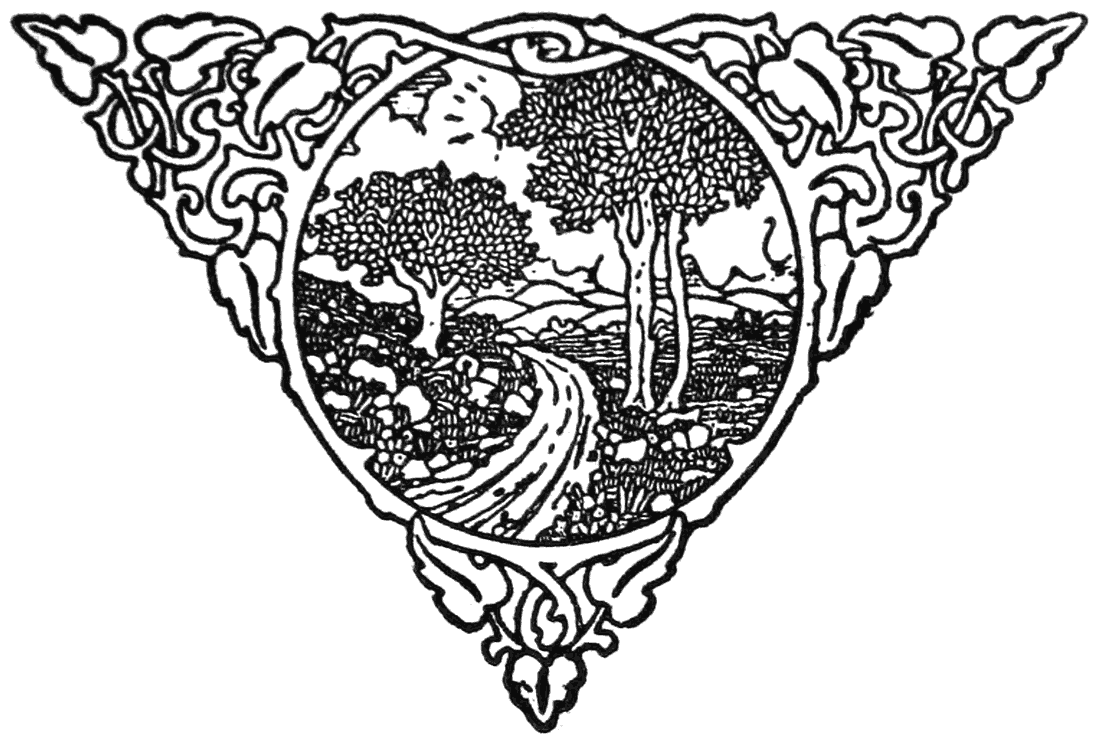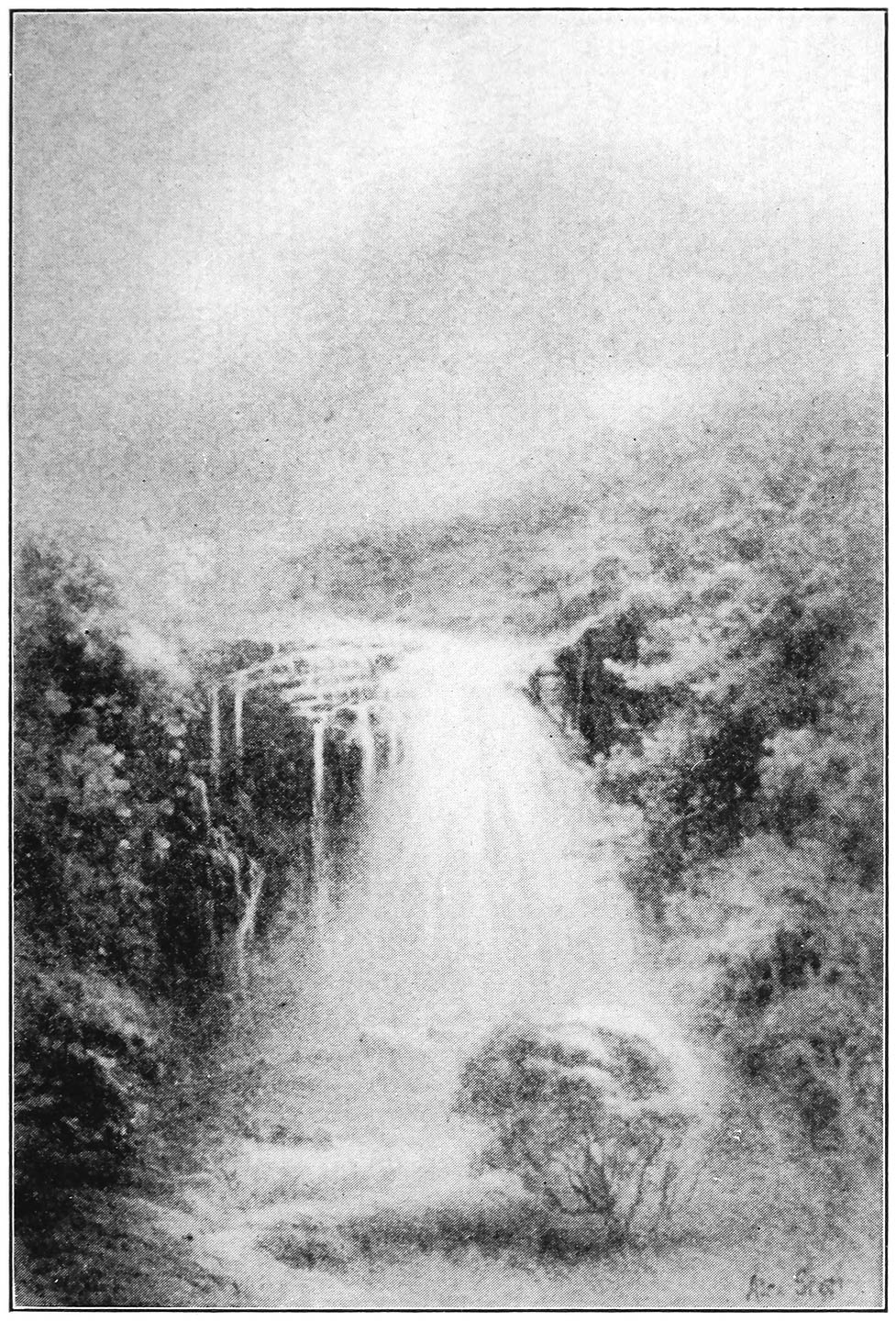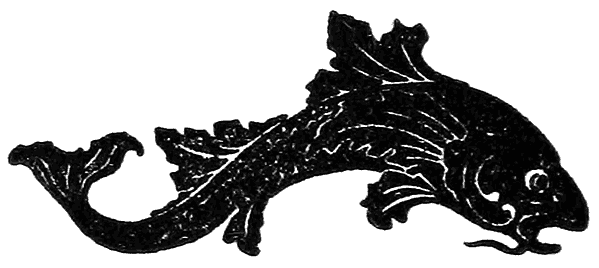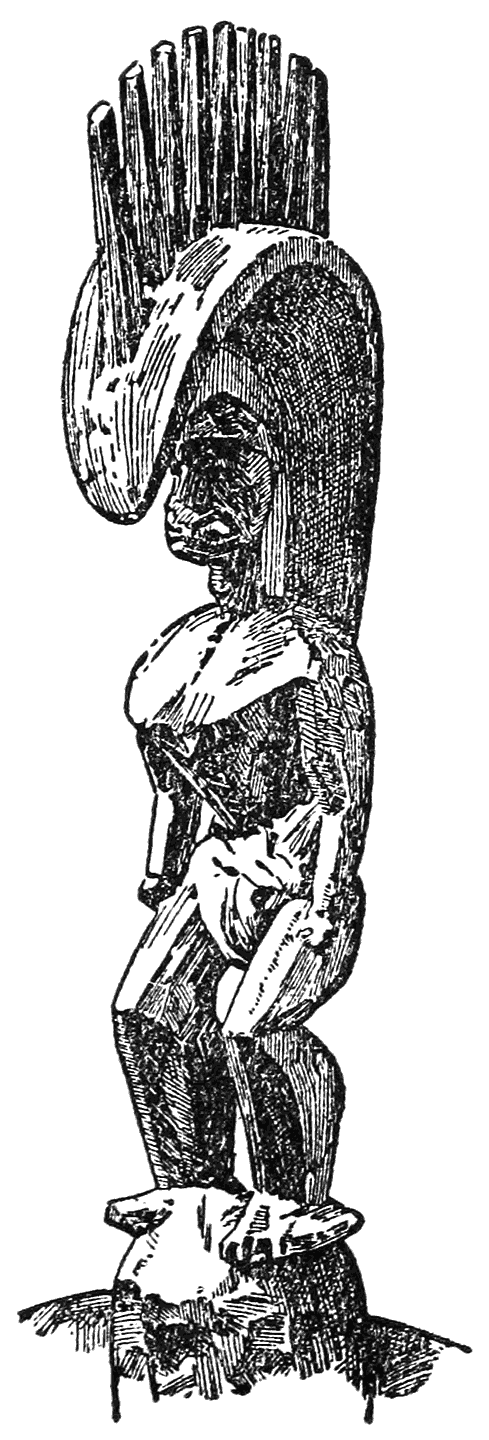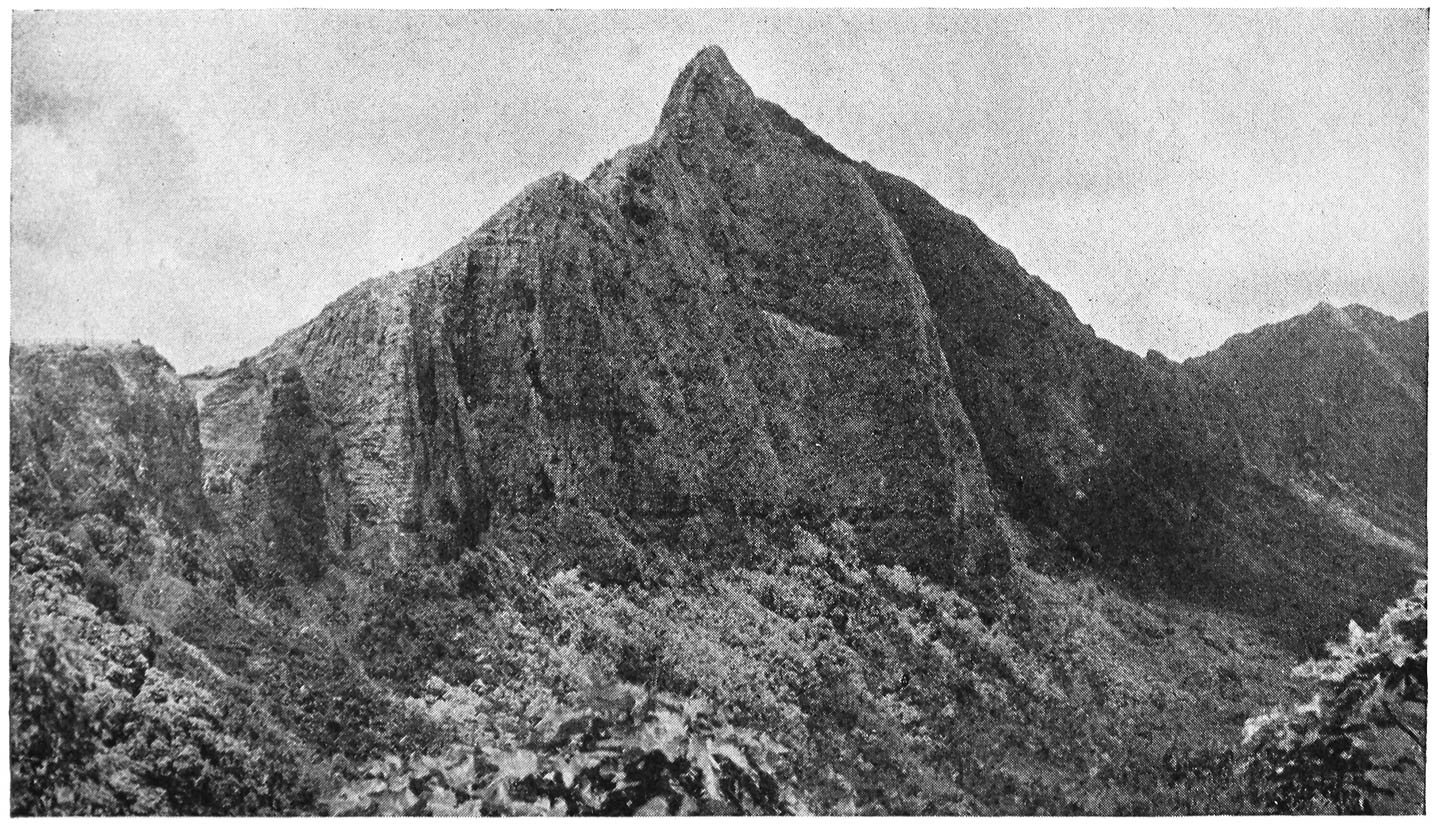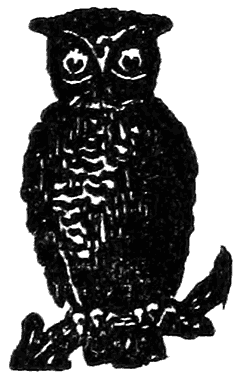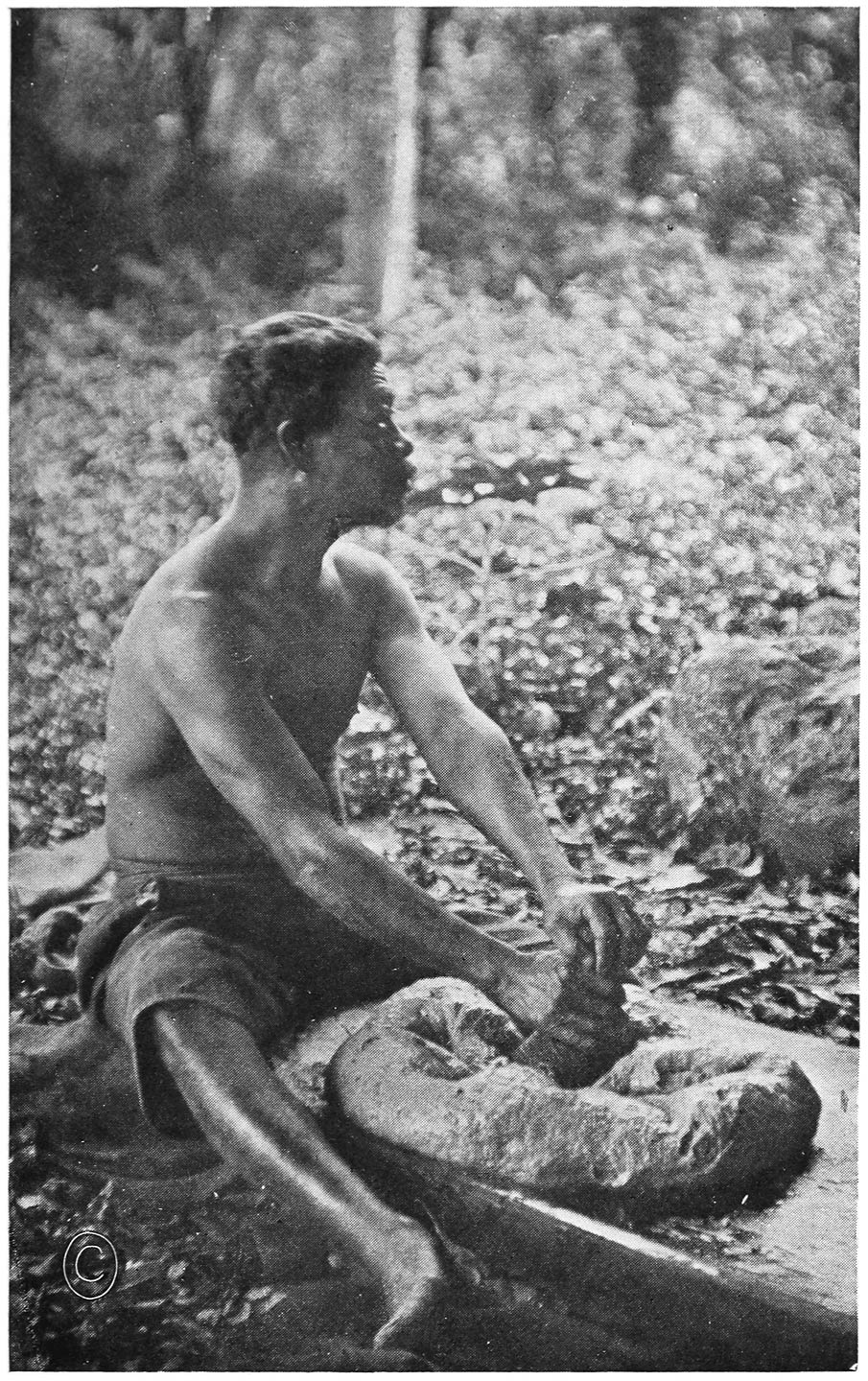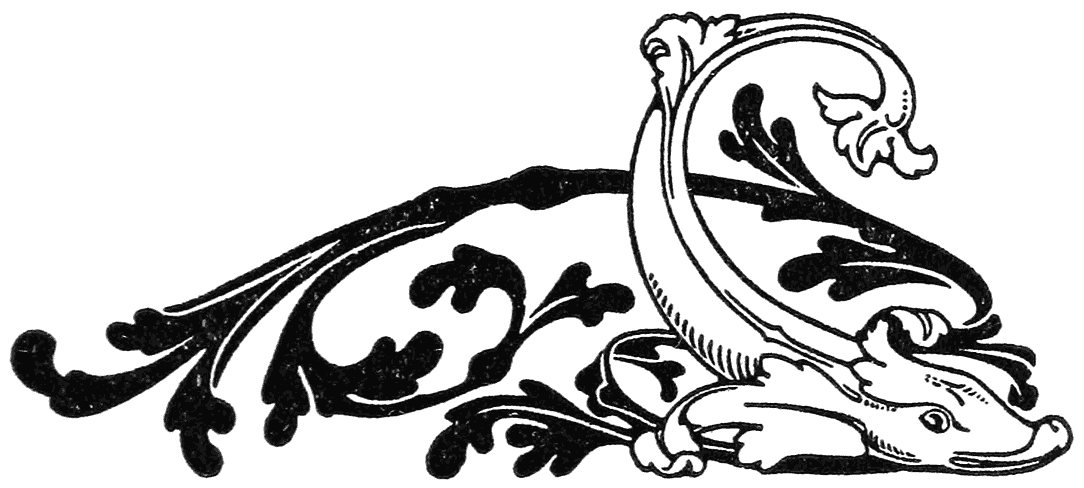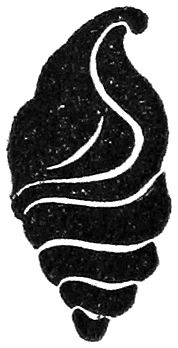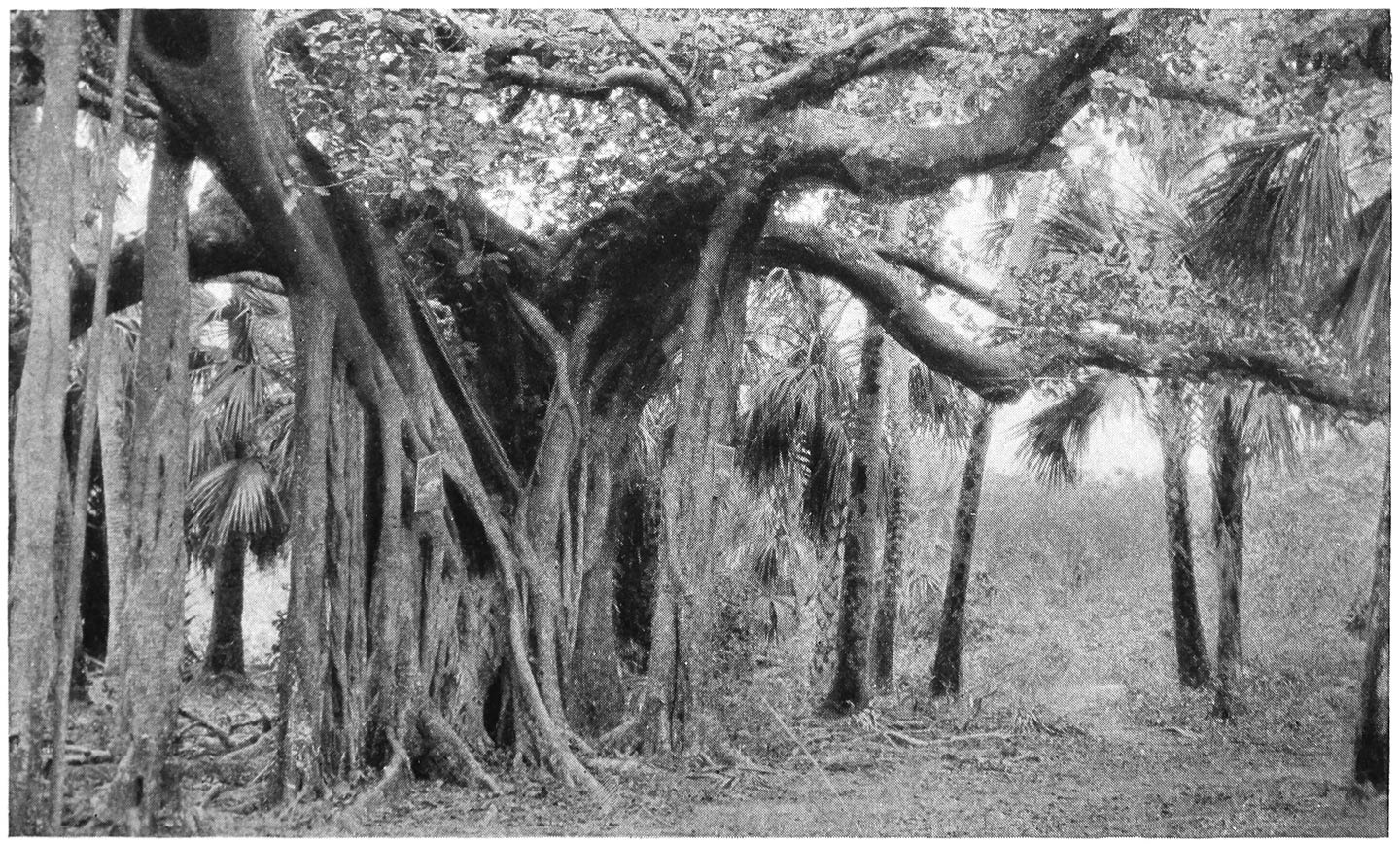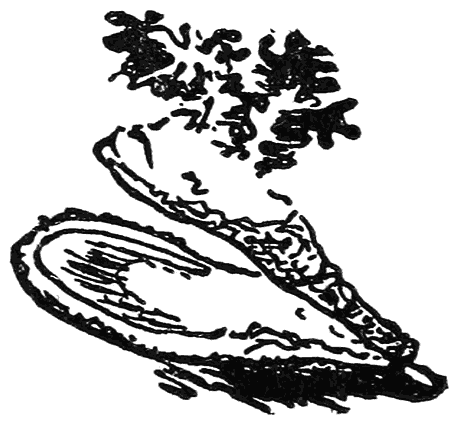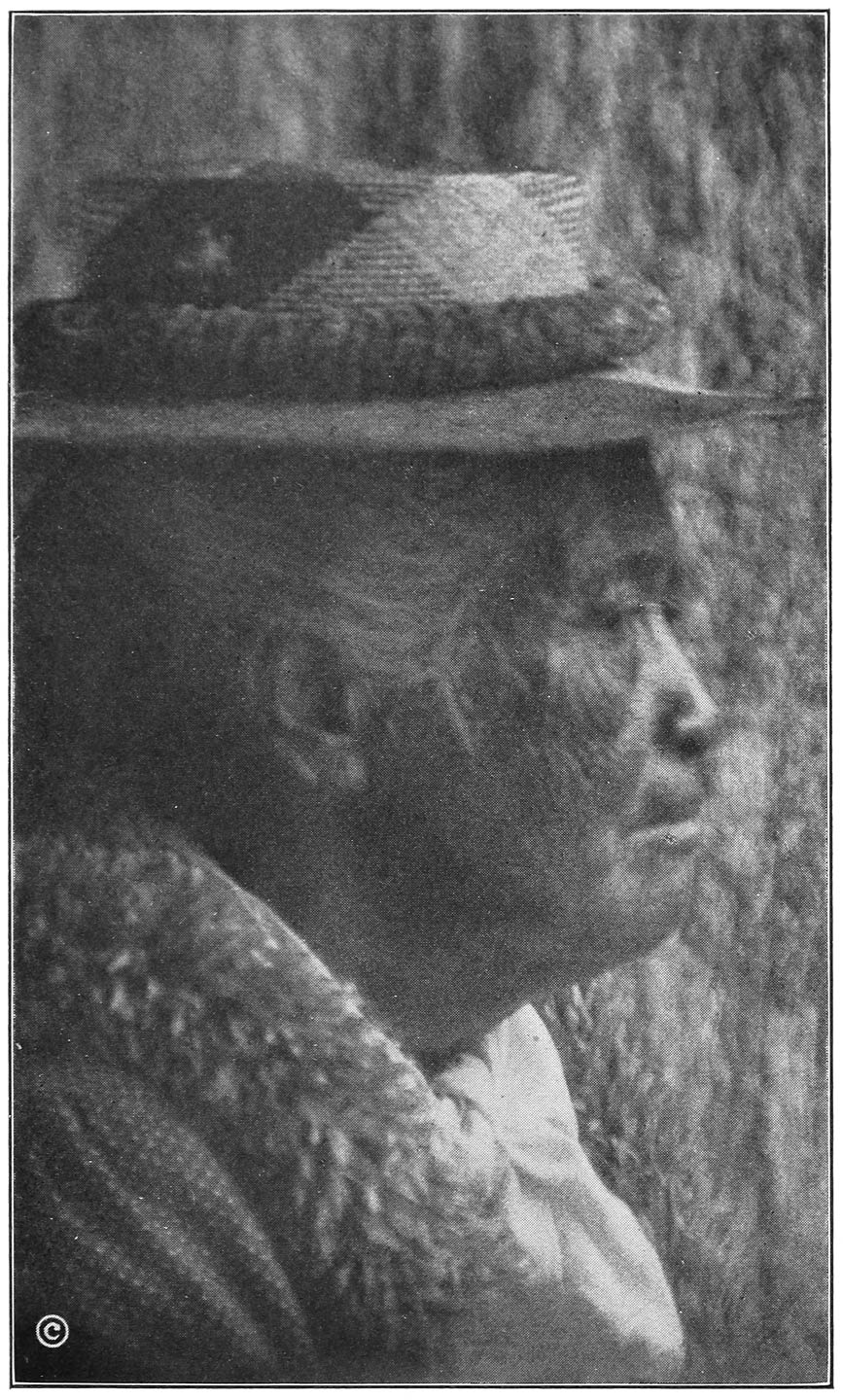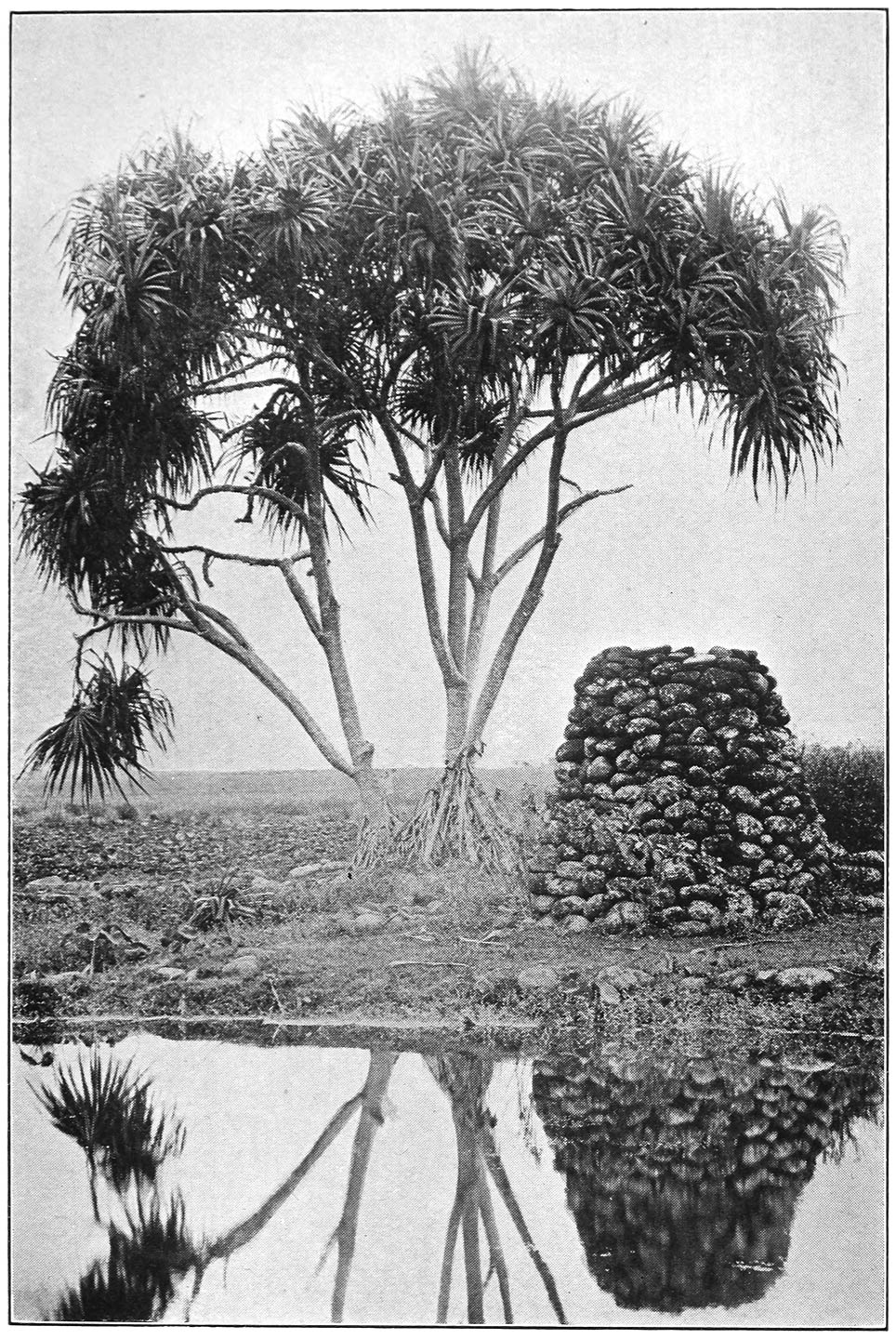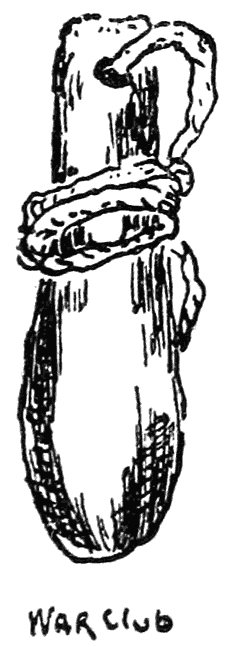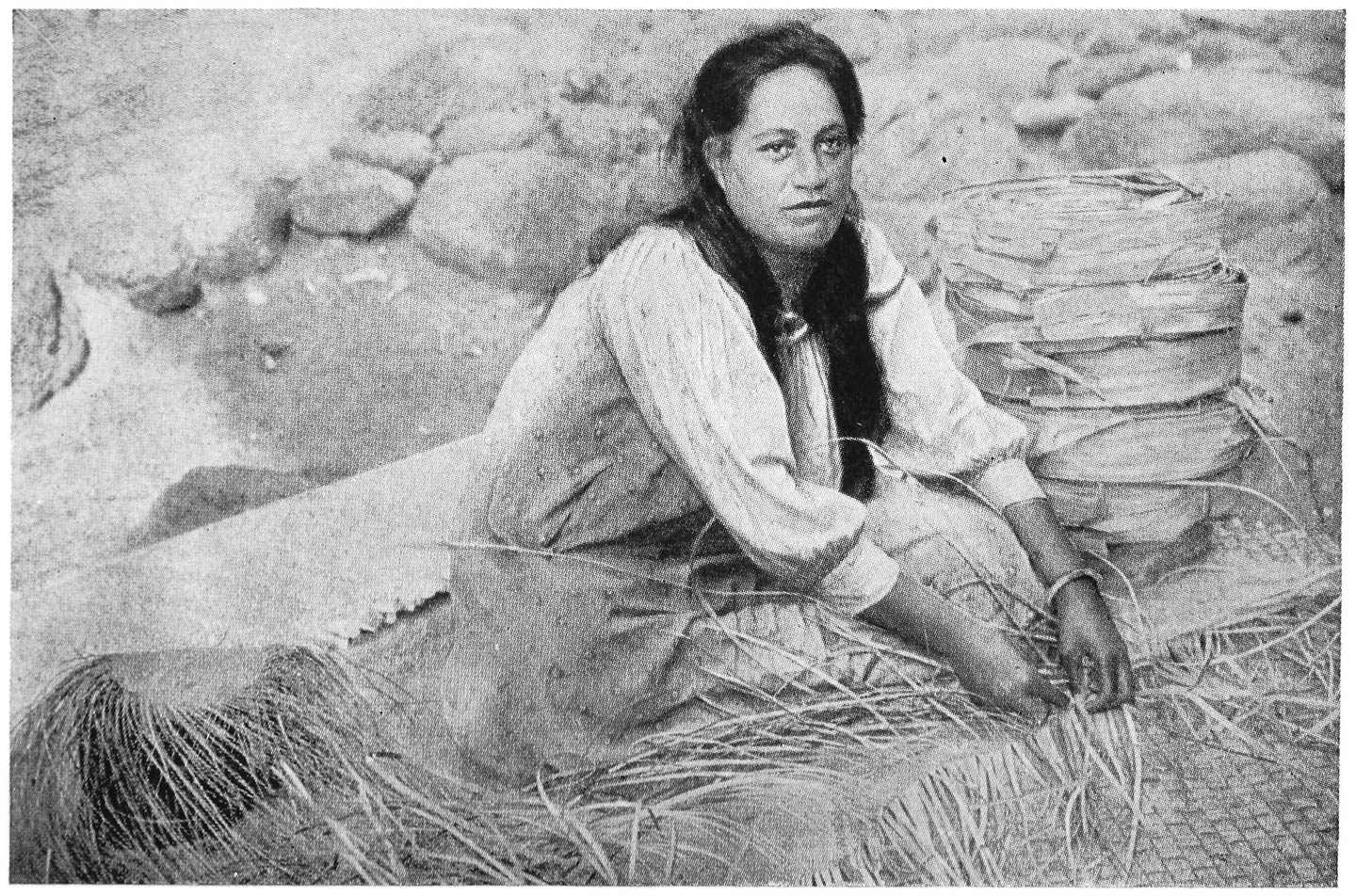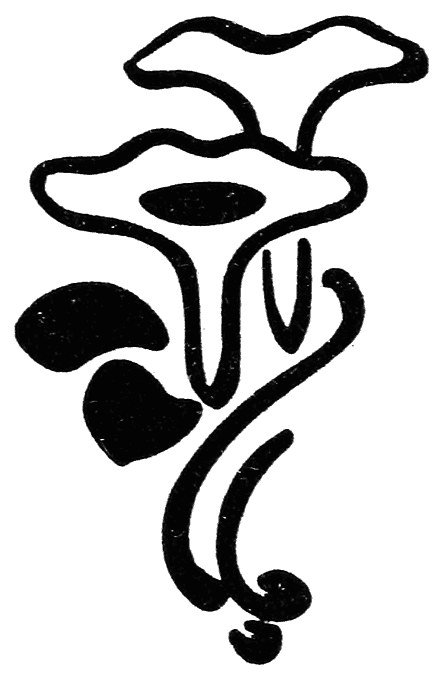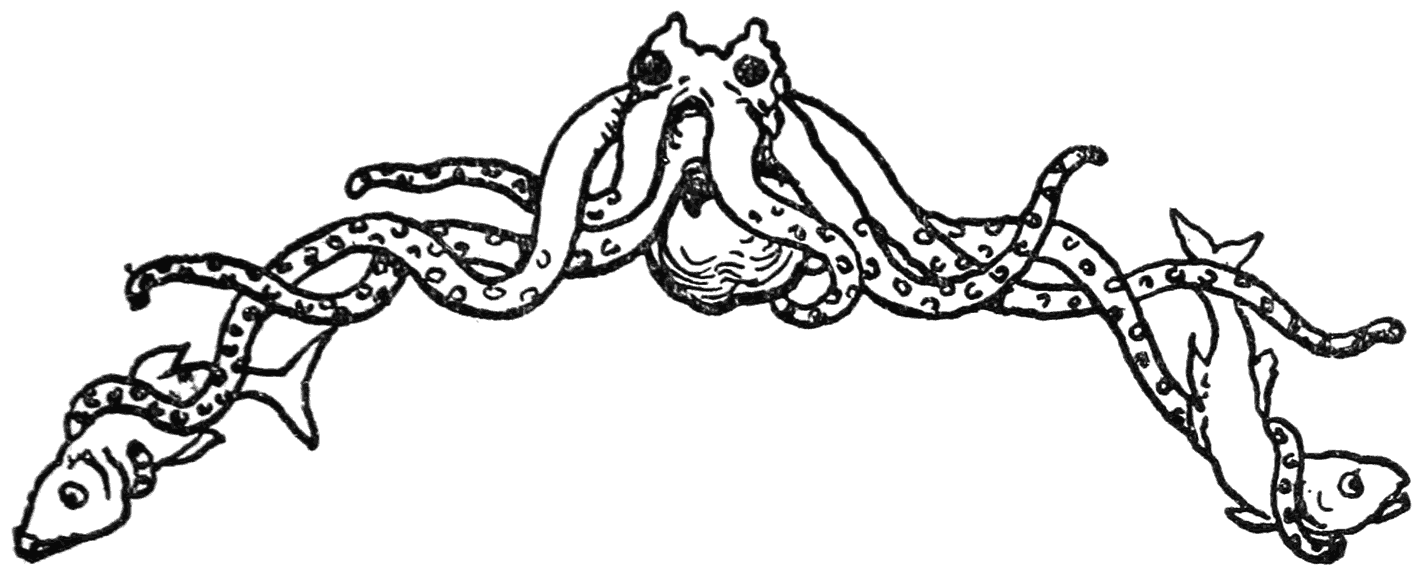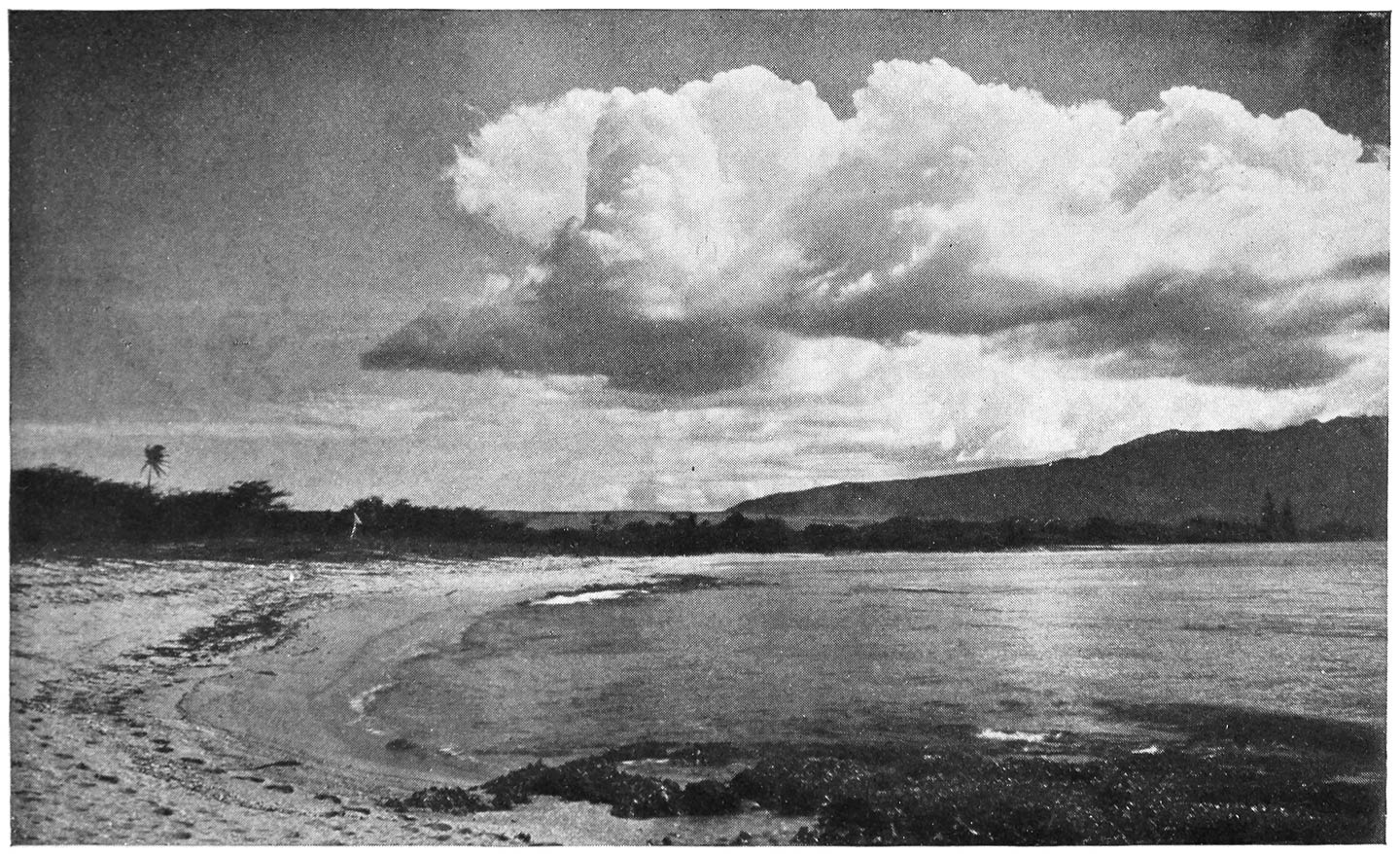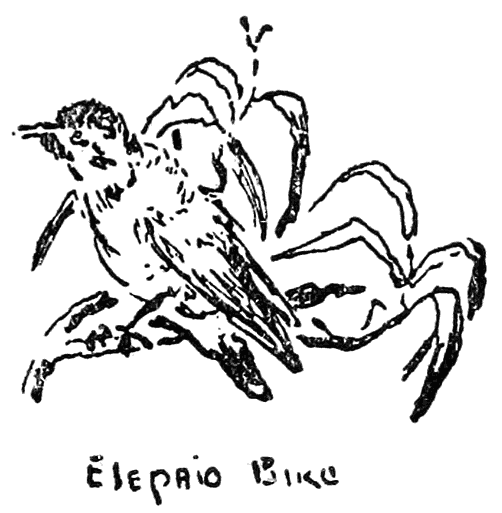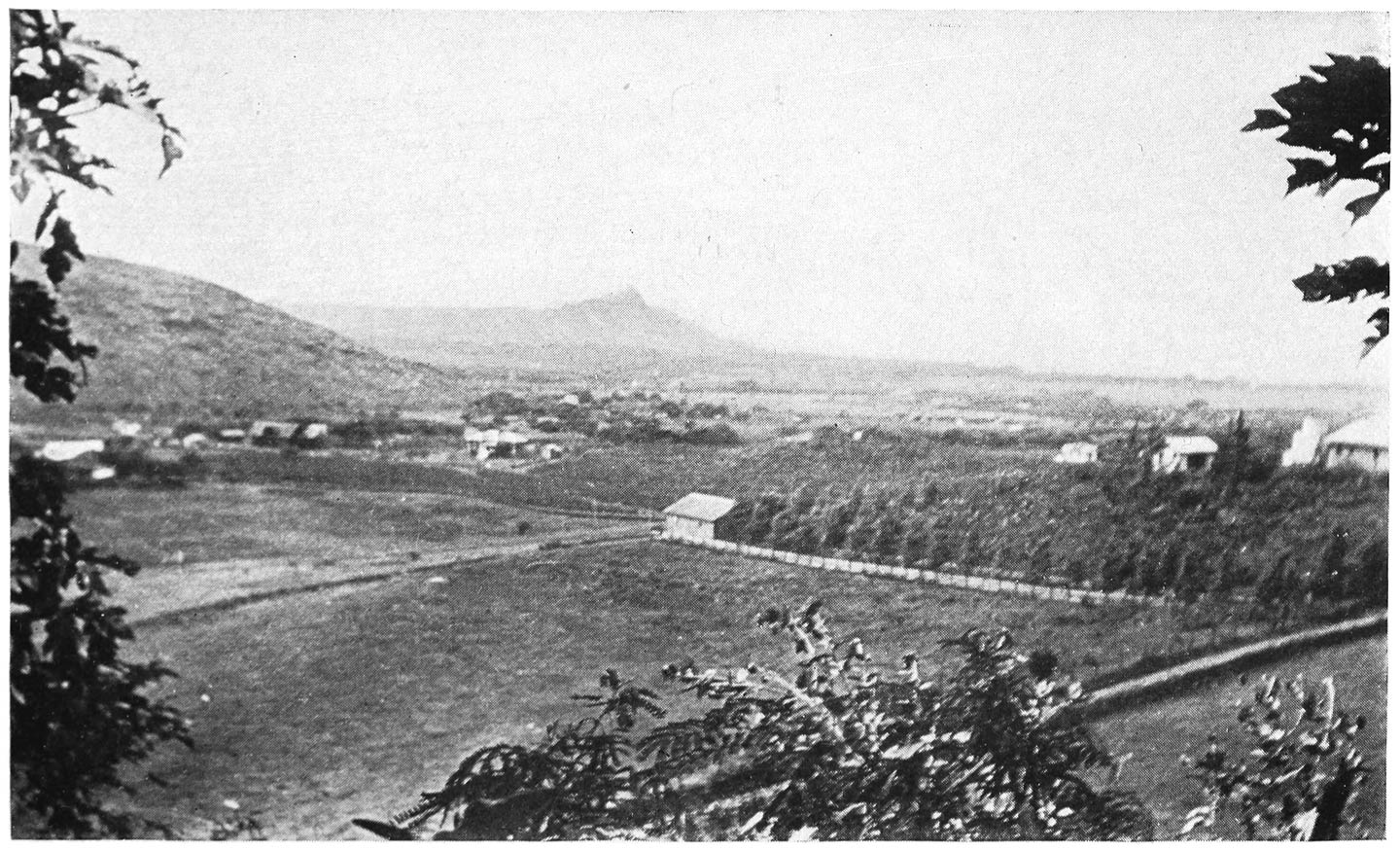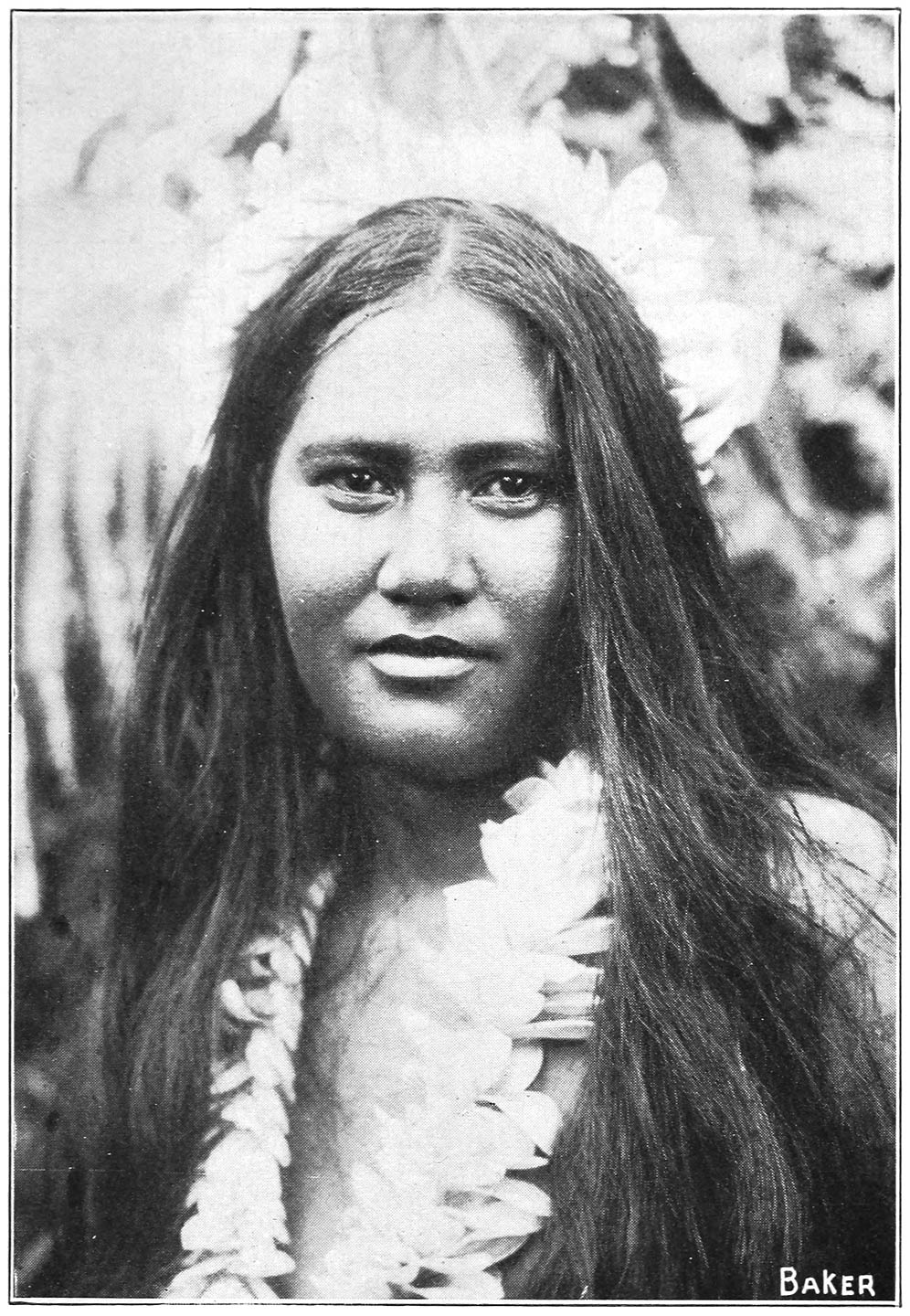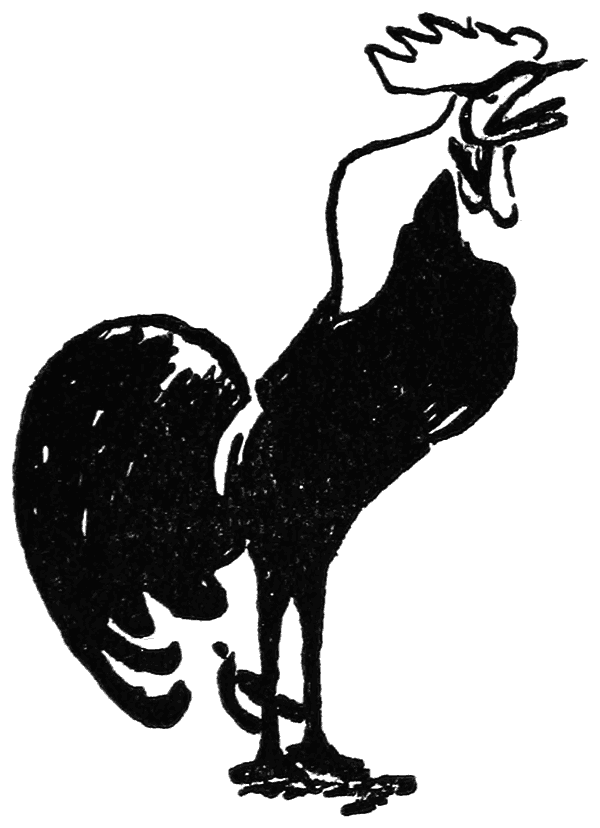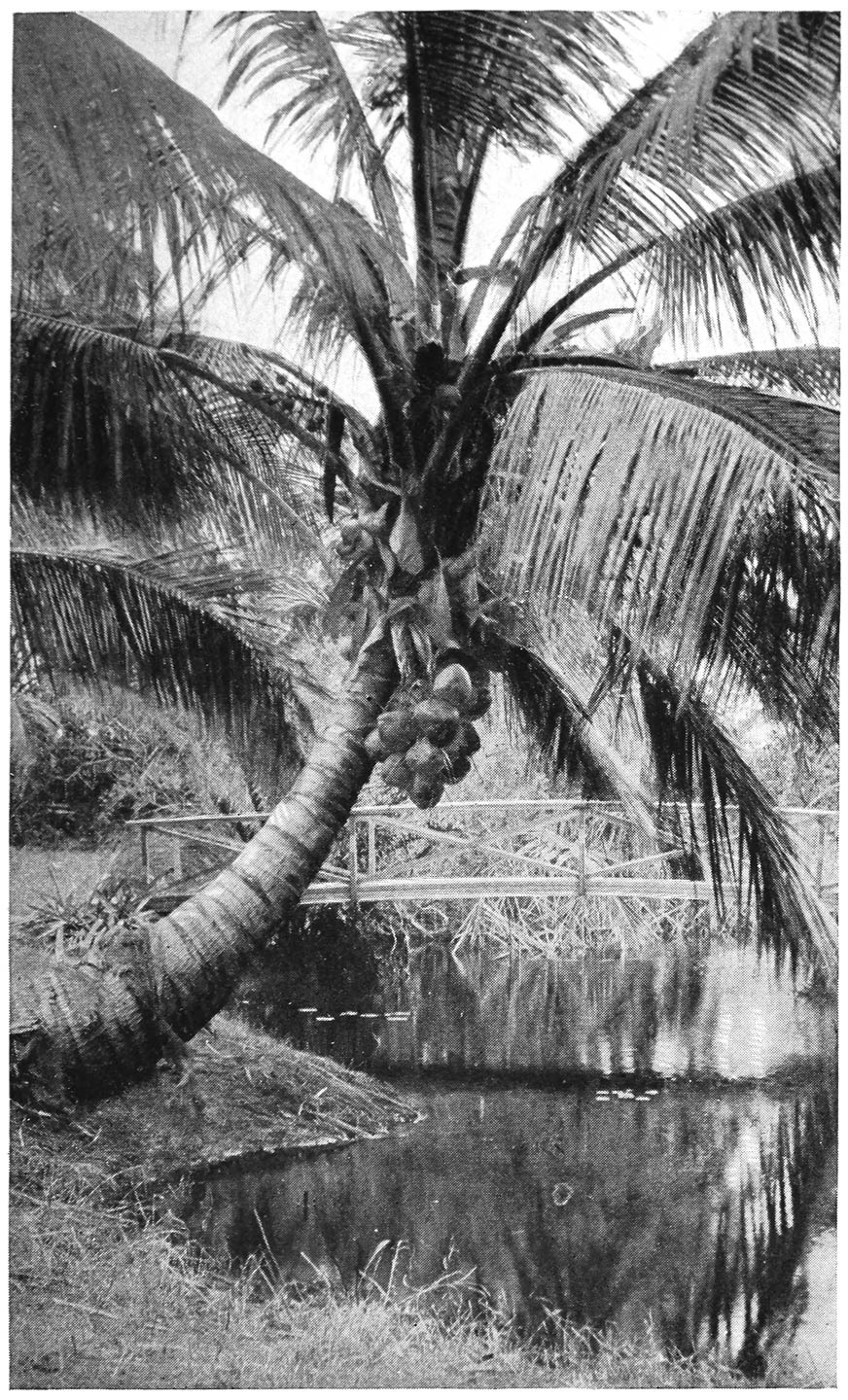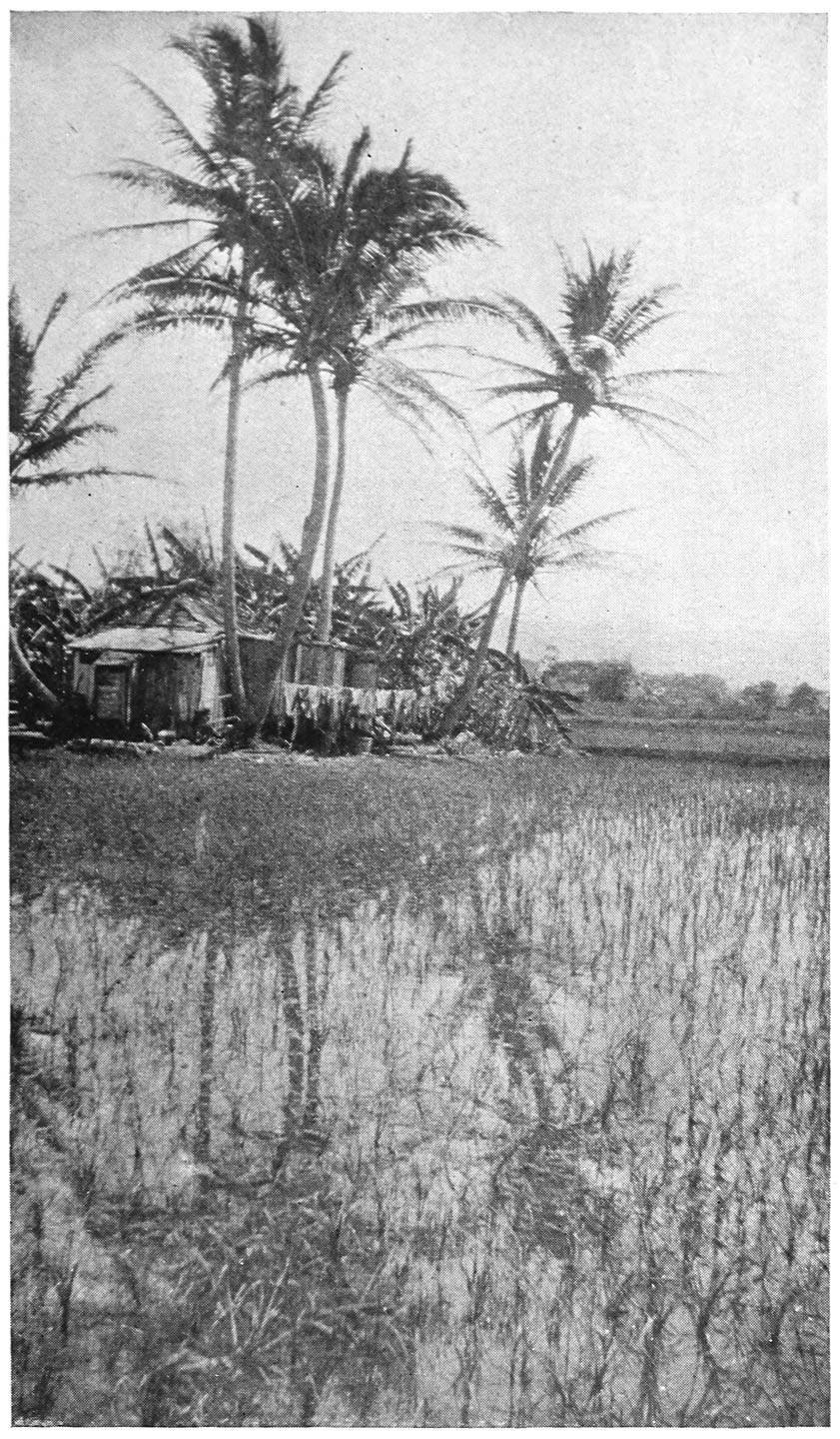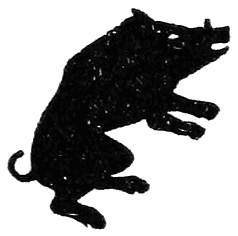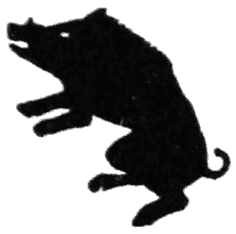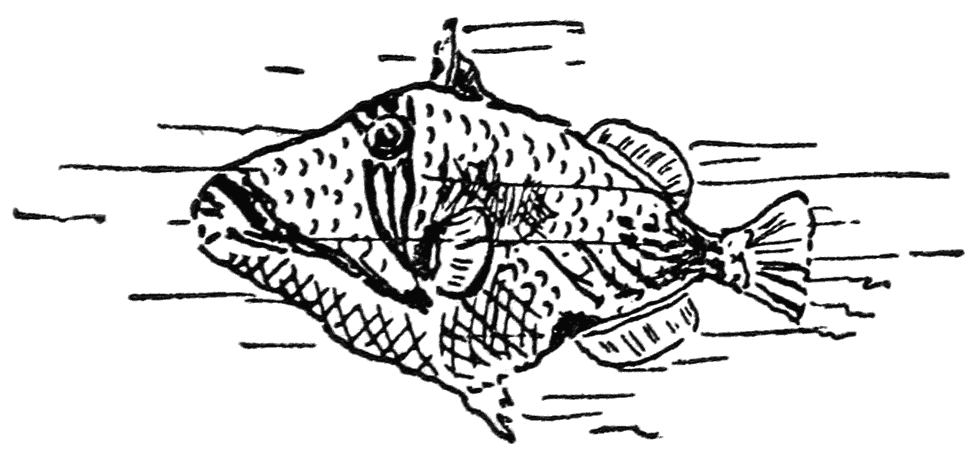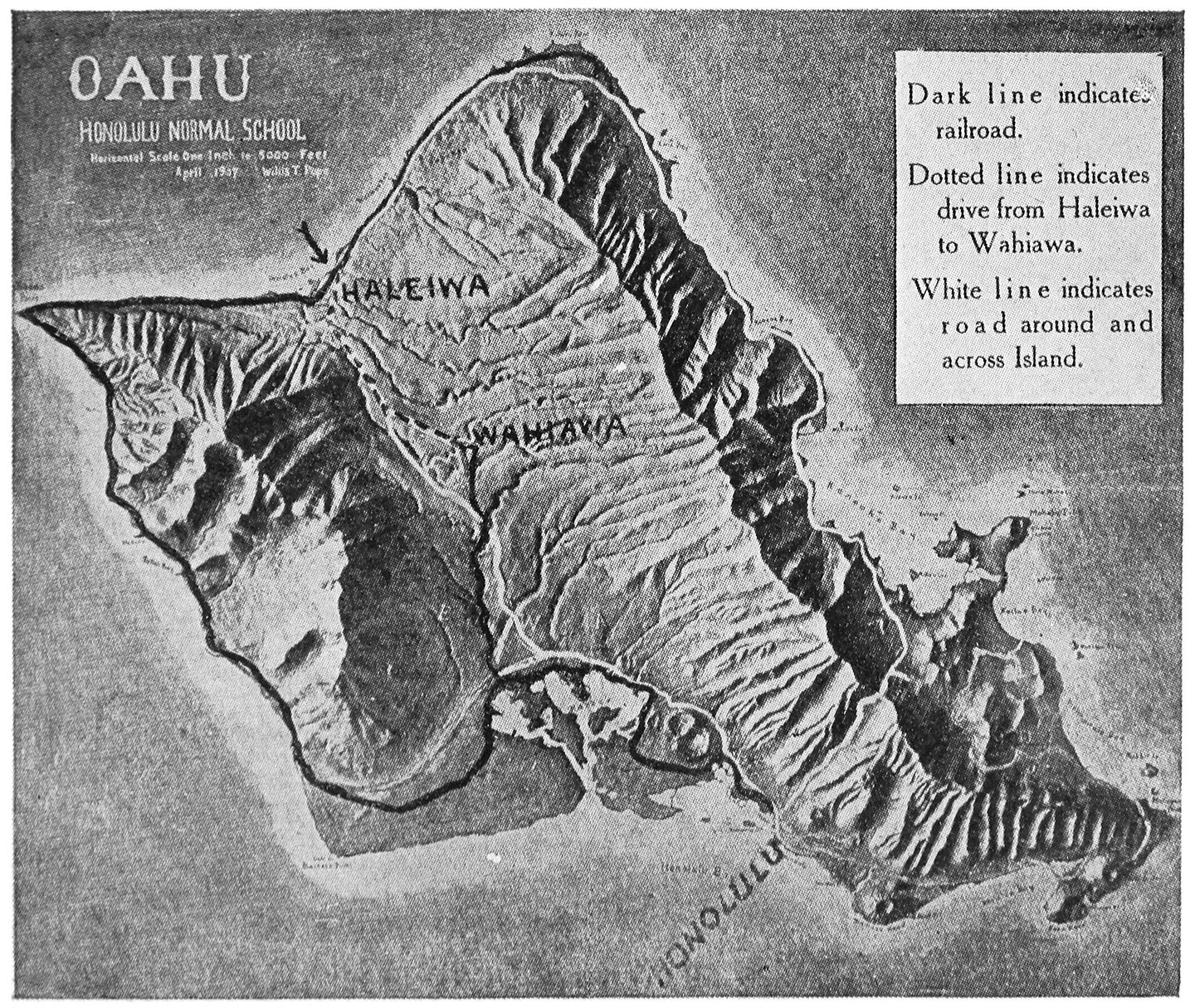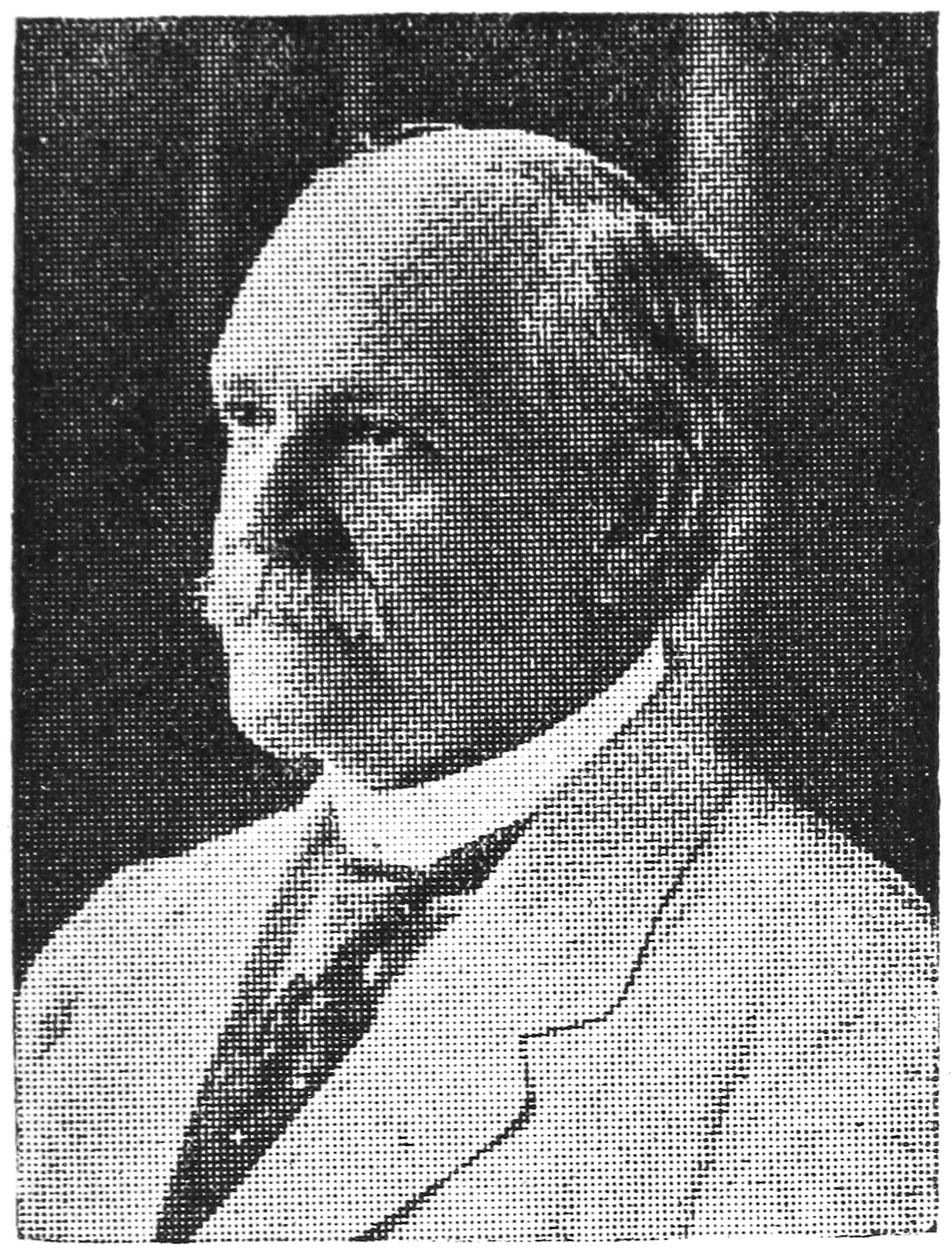This part of the legend of Lepe-a-moa belongs to Waikiki and to Palama.3 It is also one of the ancient long stories handed down from generation to generation
among the Hawaiians. It came from the days of Kakuhihewa, who was the King Arthur
of Oahu traditions and whose chiefs were “the Knights of the Round Table” after whom
most of the noted localities of Oahu were named. However, this goes back into the
misty past only about four hundred years.
A boy and a girl were born on the island of [228]Kauai, both possessing miraculous powers. The girl, Lepe-a-moa, was taken as soon
as born to Palama, and there brought up by her grandparents. The boy, Kauilani, was
reared by his parents on Kauai, and there did many wonderful deeds, after which he
came to Oahu to visit his sister.
At birth, Lepe-a-moa was only an egg, which, under the care of the grandparents, developed
into a very beautiful maiden who could assume at will a multitude of bird forms. Thus
she was what the ancient legends called kupua, or a person having both human and animal
powers.
The young chief desired to visit the court of Kakuhihewa, who resided at Waikiki.4 The grandmother, Kapalama, sent messengers to Ke-ao-lewa, the ruler of the birds
of the heavens, for new clothing fit for the young chief, and they returned with a
magnificent feather sash, and a glorious red feather cloak, shining like the blossoms
of the lehua-tree, and fringed with yellow feathers which were like golden clouds
in the light of the setting sun.
He bound the sash over his shoulders and around his body as a girdle, or malo, threw
the cloak from the heavens around him, took his magic spear, Koa-wi Koa-wa, which
had the power of human speech, and journeyed to Waikiki.
[229]
At this time Kakuhihewa was entertaining his sister and her husband, Maui-nui, who
was king of the island of Maui. According to custom, the days were devoted to sports
and gambling.
Maui-nui had a kupua, a rooster, which was one of the ancestors of Kauilani’s family,
but was very cruel and destructive. He could assume a different bird form for each
magic power he possessed. This, with his miraculous human powers, made him superior
to all the roosters which had ever been his antagonists in cock-fighting. It was the
custom of this king to take this kupua in his rooster body, with some other chickens,
and visit other chiefs, having many battles and winning large amounts of property,
such as the best canoes, the finest mats and kapas, and the most royal feather cloaks,
as well as the lands of the chiefs who had not been subject to him. Sometimes, when
all available property had been won, he would persuade a chief to “bet his bones.”
This meant that the poverty-stricken chief, as a last resort, would wager his body
against some of the property lost. If defeated, his life might be taken and his body
sent to the most noted heiau (temple) of his opponent and placed on an altar as a
human sacrifice, or the body would be burned or cooked in a fire oven and thrown into
the sea.
[230]
Kakuhihewa and Maui-nui had been passing many days in this sport. When the Maui king
was afraid the game might be given up, he would let some of the ordinary chickens
fight, or would select the weakest from his flock. Then a large amount of property
might be returned to the original owners, but he took care to lead his opponents on
until their pride or their shame compelled them to wager their very last resources.
Thus the betting had gone on from time to time until the Maui king had provoked Kakuhihewa
into betting his kingdom of Oahu in an almost hopeless attempt to win back all that
had been lost before.
The Oahu king realized that his brother-in-law was using a bird of magic power, but
his bets had been made and word given, and he did not know of any way in which he
could get sufficient magic to overcome his antagonist. He had heard about Kauilani,
a wonderfully powerful young chief on Kauai, who had conquered a god of the seas and
restored a kingdom to his father. He had sent messengers to Kauai to ask this young
chief to come to his aid, promising as a reward the hand of his favorite and most
beautiful daughter in marriage; but the days passed and no word came from Kauai. Meanwhile
Kauilani came before Kakuhihewa and was announced as a young [231]chief from Kapalama. No one thought of any connection with the noted warrior of Kauai.
The king was very much pleased with the young chief, and finally asked him if he had
seen his chickens, and if he would like to go to the place where they were kept.
Kauilani saw the chickens and sent for water, which the keepers brought to him. Taking
it, he sprinkled the eyes of the roosters. None of them had sufficient power to keep
from shutting their eyes when the water struck their heads. Then he said to the keeper,
“These birds will not be of any use for our chief.”
Then he went to see the king’s tabu rooster, the one reserved by the king for any
last and desperate conflict. This he also tried and found wanting.
The keepers then sent word to the king that a strange young man with great wisdom
was looking at the chickens, and the king came out and asked Kauilani about the tests.
The young chief sprinkled water as before, and then said to the king, “Perhaps your
rooster has strength and perhaps he has no power.”
The king said: “Ah! We see that this tabu rooster has no strength for this conflict.
He closes his eyes. His enemy is very strong and very quick. We shall be defeated
and belong to the king of Maui.”
[232]
Then Kauilani said, “Perhaps I can find a bird of very great powers who can save us.”
The king said: “If you defeat Ke-au-hele-moa, the magic rooster of the king of Maui,
you shall become my son. My daughter shall be your wife.”
Kauilani requested the king to have the place closed where the chickens were kept,
so that no spy could watch them. He told the king he had a kupua chicken still in
an egg, which would kill the great bird of the king of Maui, but that before the time
came for the festival in which the cock-fighting occurred his chicken would be hatched
and have power to save the king and his kingdom. The king was filled with delight,
and took the handsome young chief at once to his house and sent for his daughter.
He said to her: “I have set you free from the tabu which I placed upon you as the
promised wife of the chief of Kauai. It is better that you should take this young
chief as your husband.”
So they were married and lived together a few days. Then the young chief told the
king he must go at once to obtain the chicken egg. He told his wife not to be jealous
about anything she might hear among the people, and not to be angry in any way whatever
at the time of his [233]return, or he would not continue to have her as his wife.
He went back to his sister, Lepe-a-moa. She saw him, and leaped to meet him, calling:
“Come! Come! Come! I have waited and waited for you.”
He told her all about his visit and the great need of the king, saying, “I have come
back for this day only and for your help.”
Then they went to the bathing-pool, and were swimming, diving and bathing when they
heard the sweet voice of the mischievous elepaio bird over them, around them, and
at last from the bank of the pool, calling out: “Ono ka ia! Ono ka ia!” (“The fish
is sweet! The fish is sweet!”) This bird was also Lea, the goddess of canoe-cutters.
Kauilani called to her: “Why do you not get young fish in the ocean? Is this the only
place for sweet fish?”
Then the elepaio told the brother and sister about the great rooster belonging to
the king of Maui, its miraculous power, and its name, “Ke-au-hele-moa,” and then said:
“You two go to the place of the fight. Take great care of your sister. Put her in
a lei garland around your neck. You will note the appearance of that rooster of the
king of Maui: very tall; black, white and red feathers; only [234]one tail-feather. If he sees his grandchild before the fight she will not escape,
but if you keep her hidden until she goes out for battle he will be destroyed.”
When the brother and sister returned they told the grandparents about Kakuhihewa’s
trouble and the power of the rooster of the king of Maui to assume several bodies.
Kauilani told them that the Maui king was so sure of winning that he had collected
a great pile of wood wherewith to heat an oven in which to cook Kakuhihewa’s body.
The grandmother said: “That great bird is one of our own family, and has very great
power, but Lepe-a-moa has much greater power if you two work together. He must not
see her until she goes out to fight with him.”
Lepe-a-moa said to her brother: “This is bad for you. You come as if you loved me,
but you have taken the king’s daughter for your wife. If I go with you and your wife
is angry with me, she shall be set aside and I will be your wife.”
Kauilani said, “That is right.”
Lepe-a-moa made herself very beautiful with a glistening spotted feather cloak. Her
pa-u, or skirt, was like fire, flaming and flashing. Kauilani told her she must go
first, as the eldest one of the family. Thus they passed in their splendid feather
dresses down to Kou (Honolulu) [235]and out to Pawaa, the people shouting and praising the beautiful girl.
As they came to Waikiki the noise of the people could be heard far, far away: “O the
beautiful girl coming with the husband of our chiefess! O the beautiful girl!”
The king’s daughter heard the shout and became very angry. She ordered the people
to drive Kauilani and Lepe-a-moa away.
But the servants knew the reason why the young chief had become the husband of the
king’s daughter, and said among themselves: “We want to live. We must not drive them
away.”
Lepe-a-moa said to her brother, “I told you that she would be angry with me.”
“Yes,” said the brother, “that is true, and you shall be my wife.”
They turned aside from the royal houses. The girl laid aside her girl body and put
on her bird body in one of its smallest forms and was concealed in an egg. The brother
wrapped this egg in a corner of his cloak, put it around his neck and went to the
place where the chickens were kept and took one of the small houses of the keepers
as his own.
That evening, when a large calabash of food was brought for the chickens and set aside,
he took it secretly, gave all the food to his sister [236]and turned the calabash up as if it had been upset and the food eaten by dogs. The
caretakers were greatly worried because they had no food that night for the chickens.
They knew that the chickens would not have any strength for fighting.
When Kakuhihewa heard that his daughter had driven her husband away he was very much
troubled, and was afraid that he and his people would be destroyed, so he sent messengers
to look everywhere and if possible find the young chief, but they all failed.
At last one of the guardians of the chickens said, “Your son is sleeping in one of
our houses.”
Kakuhihewa sent Kou, one of the highest officers in his government, to go after Kauilani.
This Kou was the chief after whom Kou, the ancient Honolulu, was named. Kou found
the young chief sleeping, and aroused him, telling him the king was very sorry for
the anger of his daughter, and asking him to come back to the king’s house and on
the morrow see the day of death.
Kauilani told Kou to return and tell the king to prepare everything for the day of
battle, and hang a large kapa sheet between two posts. He pointed out two roosters
which were to be taken first. The king was to send them one by one to fight. When
they were killed the king was to [237]ask for a time of rest. “After this will be the time for my battle.” Thus he taught
Kou, who returned and told the king.
The next morning the king of Maui sent his messenger to the king of Oahu, asking if
all things were ready for the battle of that day.
The king of Oahu replied: “Yes; we will go to the place of death. If they win, we
die; but if we win, there shall be no death. I do not know how to kill a man in this
way.”
So they all went to the battlefield. As soon as all the chiefs and the people were
assembled, Maui-nui, king of Maui, leaped up and began his boast, proposing the battle
and stating the conditions, “Death for the defeated.” Kakuhihewa quietly answered:
“If I win, I shall not kill you. You have already prepared for our death.”
The wife of the king of Maui favored the terms of the Oahuan ruler to be applied to
both sides, but her husband again called out his condition, “Death to the defeated.”
Then Kakuhihewa stated his condition: “We will try one rooster, and then another.
If both of my roosters are killed, we will rest until time has been given to get another
bird for me.”
This was agreed to without any opposition. [238]The chickens were quickly freed. The roosters leaped against each other and one fell
dead. Then the second battle was fought and the second rooster killed.
While they were resting, Kauilani went in behind that large kapa sheet which he had
requested. The egg was wrapped in his cloak, which was thrown around his neck. He
took out the egg and uttered an incantation:
“The chicken comes out better in the heat.
Both of us were born at midnight.
Dust rises and is blown like mist on a wave.
Pick the flowers of the ohia—pick the flowers.
Fly! Fly! Fly!
Leaping in the dust of Kaumaea.”
The egg began to change until it became a full-grown chicken.
Kauilani told his bird-sister to go out before the people thus: “Go all around the
fighting-place. Go to the feet of Maui-nui, and look upon him; then go to the middle
and stand there looking into the face of your ancestor. He will then know you perhaps,
and will put on many kinds of bird bodies. If he puts on red, you must become white.
You have more bird bodies than he. You will win. Then if he changes his body again
I will tell you what to do until he becomes weary; then you put on your spotted body
and kill him.”
[239]
The bird then left him and went out before the people. They made a great noise, laughing
and crying out: “A hen! A hen! To fight the great rooster!”
But she was very beautiful in her shining coat of feathers as she waited for the battle.
Then the rooster came in, and Kauilani saw that he did not recognize his grandchild.
Lepe-a-moa clucked and moved her head and wings like a hen calling to her young chickens.
Ke-au-hele-moa was angry. His feathers rose as he came up and he changed their color
into red. His antagonist became white.
Then he struck at her, leaped at her, and tried to overthrow her with his wings, but
was not able to touch her, while she lightly flew over his head, striking his face
and beating him with claws and wings.
Then he became moa-nene (a goose form), but Kauilani uttered a prayer and his sister
became a swift aloe-bird, a small mud-hen. The battle again was fought, whirling,
striking, leaping and flying, but the bird-girl was not injured in the least, while
the rooster’s face was bleeding and his eyes suffering from the terrific and swift
blows dealt by Lepe-a-moa. She tore him to pieces, until the battle was in a thick
cloud of flying feathers.
The people thought he was dead, but his [240]magic power was still in the fragments of his body, torn and thrown up, floating far
up among the clouds. He rested in some mist-clouds above, and put on a body having
the color of the yellow blossoms of the hau-tree.
Before this the day had been quiet, but now, with the return of that rooster, the
chill of snow and ice came down in a cold mist like the snow mists on the tops of
the mountains. The rooster sent this icy, fine rain in a stream like a flowing river
over Kakuhihewa and his people.
Then Kauilani called to his sister: “Behold Ke-au-hele-moa comes to his last strength.
He follows the ice-cloud. Can you make a way of escape?” This call was in a spirit
voice and none of the people heard.
Lepe-a-moa called upon Ke-ao-lewa (The morning cloud) for help, and a cloud was let
down as a shield, turning off the cold mist and letting it pass on over the sea. So
Kakuhihewa and his people were left in peace.
Lepe-a-moa flew up into a tall coconut-tree and saw her enemy in the form of a manu-alala
(great black bird) coming behind the mist to the battlefield. She flew down and put
on the color of the pua-niu (the cream color of a coconut blossom) and again flew
like a whirlwind around her enemy. Then the ancestor-bird took his last body, that
of a moa-a-uha.
[241]
Kauilani called to his sister to go around before all the people, putting on her spotted
body, and then return, looking sharply at the right wing of her enemy to find a place
to break it, then fly against the right eye and pick it out, and after that fly down
on the head of the king of Maui, then leap to the last battle, break the left wing,
pluck out the left eye and tear the body to pieces. “Then he will die. He cannot make
a new body for himself.”
Lepe-a-moa flew down upon the black bird, which tried to strike her with its strong
wings, but when the right wing was spread out, showing its weak places, she flew in
swiftly and broke that wing so that it could not be used. Then she leaped against
the head and caught the right eye, destroying it. The black bird tried to whirl around
and around to strike the spotted chicken, but Lepe-a-moa shook her wings over her
enemy and flew off around the place of battle until she was in front of the Maui king.
Before he could think or make a move for self-protection she dashed into his hair
and tore it with her claws and flew back against her enemy. This polluted and disgraced
Maui-nui.
This time she whirled around the left side. He struck at her. As his wing was spread
out she flew in and broke it, so that it fell useless by his side. Then she struck
his eye, and he was [242]entirely blind. She dashed against him, and he fell over. She clawed and picked and
tore his body until it was in small pieces and his life was destroyed.
The people shouted with a loud voice: “Auwe! Auwe! [Alas! Alas!] The rooster of the
king of Maui is dead! Ke-au-hele-moa is dead! The king of Maui is to die!”
The name of this rooster, it is said, was given to a place far up Palolo Valley, near
Honolulu.
When the people shouted, Kauilani stood up in his splendid cloak and sash and cried
out: “Aye! Aye! Dead to me—dead to Kauilani, the child of Keahua and Kauhao!”
His sister flew to him and he took her and disappeared in the confused, moving crowd
of excited people. Thus they returned to Kapalama.
At that time Kakuhihewa learned who the young man was, and was glad that he had not
treated him uncivilly in any way and so lost his wonderful aid. He was very, very
thankful for his victory over the king of Maui.
He ordered his servants to find Kauilani, but they could not. He was fully lost.
Wailuku, the wife of Maui-nui, asked Kakuhihewa what he intended to do with them.
He replied: “I will not kill. I am for life. I do not know how to make a man. I do
not want [243]death. If you had won, you should have your desire. Now I will have life as my wish.”
Maui-nui returned to his island, but his wife remained with her brother.
The king ordered his people to make search everywhere for Kauilani. They went to Kauai,
but he had not returned to his parents. They visited Maui and Hawaii, but found no
trace. For several months the search was prosecuted. Even the mountains, hills, valleys,
forests, jungles and caves were looked over as carefully as possible. By and by two
chiefs, Kou and Waikiki, saw the signs of a high chief over Kapalama’s group of houses,
and went up to make inquiries. They saw Kauilani and told him that the king wanted
him to come back.
Lepe-a-moa said: “You must reveal yourself, and you must go back to that wife. Her
time has come.”
Kauilani sent the chiefs, Kou and Waikiki, back to the king with the message that
he would follow the next day.
In the morning he met the king, who said: “This year I have been near to death and
from you came life, and you have been lost, to my sorrow. Now my daughter’s child
is near birth, perhaps you can give life to your child.”
Kauilani went to his wife’s home. The [244]caretakers refused to let him give any aid until they had tried all their arts and
failed.
Then Kauilani sent all the people away and stood alone by his wife, uttering his chant
or incantation of life for the sick one:
“O Aumakuas! Ghost gods!
Come from the north, the south, the east, the west.
Male and female and children,
Come for this cry of distress.
O all those who have power in the skies!
Come in this time of death.
O all the household of Kapalama!
Come and give life.
I am Kauilani,
The strong child of Keahua and Kauhao.
Life for the mother and this child.”
While he was chanting this prayer the child was born. Lepe-a-moa saw that her brother
was very busy before the gods, so she secretly took the child and hurried to Kapalama.
That day there were fierce storms, resounding thunder and flashing lightning, while
the land shook in the throes of an earthquake. These were the signs usually accompanying
the birth of any high chief or chiefess.
Kakuhihewa was troubled when he knew that the child had disappeared, but was satisfied
when he learned that it was with Kapalama and Lepe-a-moa.
[245]
The baby was a girl and very beautiful, so Lepe-a-moa adopted it as her own and gave
it the name of Kamamo.
Kauilani lived with his wife, making his home all the rest of his life in the court
of his father-in-law, Kakuhihewa.
[246]




